Resonant Atmospheres: The Techno-Performance of Affection - Mona Hedayati (30/06/2025)
Mona Hedayati
- 30 juni 2025, 15:00, Het Bos - Antwerpen - registreren niet nodig
- Promotoren: Nele Wynants (Universiteit Antwerpen), Frederik De Bleser (Sint Lucas Antwerpen) en Bart Simon (Concordia University)
- Dubbeldoctoraat met Concordia University, Montreal, Canada
Abstract

As an artistic research project, Resonant Atmospheres creates and analyzes a series of live, time-based artistic events that subvert the logic of using biosensors as instruments of emotion recognition—associated with the field of affective computing—by repurposing them to structure affective atmospheres. The project focuses on how biosensing technologies, when removed from their intended function, can contribute to making the intensity of migration and exile felt by considering their capacity to mediate encounters between audiences, bodies, and media forms. To this end, Resonant Atmospheres relies on the ways that biosensors data can be transformed into sound and visuals that reveal and conceal the context of exiled migration. Alongside the atmospheric conditions of each space, these elements create possibilities for incommunication—non-narrative style ways of exchange in which meaning is not clearly transmitted or resolved but feeling the affective charge is foregrounded. The first experiment, Breathless, foregrounds me as the performer and audience as onlookers that experience the intensity of the sound affected by my biosensor readings along with snippets of videos relevant to my experience of migration, revealing limitations in its ability to generate relational engagement. In response, Curves & Reverbs I-III introduces participation, testing how contributing to the construction of the atmosphere can shape a distributed affective experience across bodies. By analyzing these experiments and their unfolding, the project contributes to a novel understanding of how the conglomeration of the technical, the artistic, and the socio-political can create situated scenarios beyond the limitations of each approach.
(foto door Danial Shah)
Singing The Silences. A journey within a journey, on holding sonic spaces - Hoda Siahtiri (10/06/2025 & 11/06/2025)
Hoda Siahtiri
- 10 juni 2025, GC De Kriekelaar - Schaarbeek
- 19:00 - 20:30 Artistieke performance + gesprek
- 11 juni 2025, GC De Kriekelaar - Schaarbeek
- 15:00 Presentatie en verdediging
- 17:00 Receptie
- Voertaal: Engels
- Promotoren: Paolo Favero (Universiteit Antwerpen), Joachim Ben Yakoub (Sint Lucas Antwerpen)
Abstract
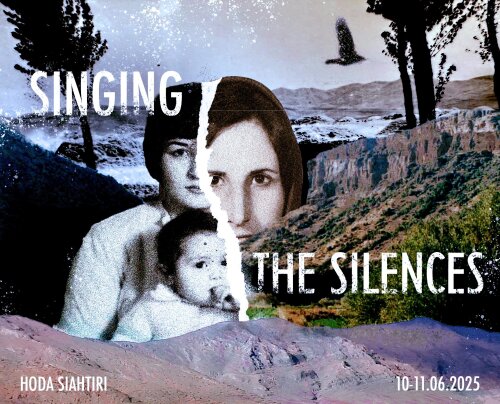
Singing the Silences (Part I)
Performance + Conversation
Tuesday 10th of June
Singing The Silences is a musical performance that tells the story of an encounter with loss. In this story Hoda Siahtiri is coming to voice, weaving her way to her first home, calling to the fore her heart's compass. Together with Guillaume Soufrice, she holds space for remembrance, precedence, transcendence and grief. Singing nearby the Bakhtiari women who passed on the songs that came before her, she invites us to listen to the silences and their transformation.
The performance will be followed by a conversation with Hoda Siahtiri, Joachim Ben Yakoub and Rolando Vazquez.
Singing the Silences (Part II)
Public Defense + Reception
Wednesday 11th of June
You will hear the story of my artistic research journey freely floating in the songs of Bakhtiari women of the Zagros mountains, but not only that. A journey within a journey, of singing the silences that started in 2017. Within this period, not only I, but the whole world, went through unprecedented turmoil. Some believe that the old world came to an end, and we are going through a period of understanding and digesting what this end means and how one gets familiar with death and end energy. Regarding life's cyclical death and rebirth dynamic, it is essential to acknowledge that my story does not begin where I start. My story is part of a longer story that precedes me, and has been told already and will be told by someone else. Or in the words of ever inspiring Trinh T. Minh-ha (1989, 123):
“My story, no doubt, is me, but it is also, no doubt, older than me. Younger than me, older than the humanised. Unmeasurable, uncontainable, so immense that it exceeds all attempts at humanising. But humanising we do, and also overdo, for the vision of the story that has no end—no end, no middle, no beginning; no start, no stop, no progression; neither backward nor forward, only a stream that flows into another stream, an open sea—is the vision of a madwoman.”
Dedicated “to the dead of these years, who were the most loving of the living”.
Sima, Zari, Anis, Johan & Masoud.
La Grande Bouffe - uitdagingen in de uitvoering van muzikale komedie - Stijn Saveniers (24/05/2025)
Stijn Saveniers
- 24 mei 2025, HERMESstudio Wijnegem - graag HIER uw aanwezigheid bevestigen
- 19:00 Deuren open
- 19:30 Presentatie en verdediging
- 21:30 Receptie
- Voertaal: Engels
- Promotoren: Bart Eeckhout, Marlies De Munck (Universiteit Antwerpen), Frank Agsteribbe (Koninklijk Conservatorium Antwerpen)
Abstract
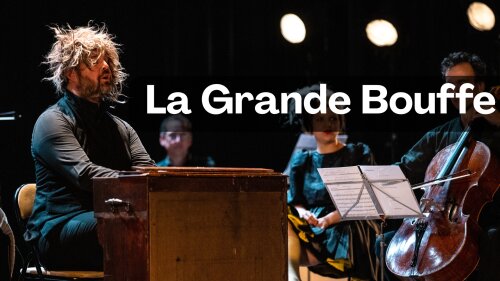
Foto © Björn Comhaire
Deze studie onderzoekt de werking en effectiviteit van muzikale humor binnen de operette, met als doel de intrinsieke kenmerken en structurele elementen te identificeren die bijdragen aan het komische in muziek. Aangezien bestaande analysemethoden onvoldoende bleken om de complexiteit van muzikale humor in dit genre te vatten, werd een op maat gemaakte analysemethode ontwikkeld. Deze methode, geïnspireerd door constructivistische grondslagen, biedt een systematisch kader voor het analyseren van humoristische elementen in muzikale composities en uitvoeringen.
Centraal in het onderzoek staat de ontwikkeling van een taxonomie van ‘muzikale humortechnieken’, waarin uiteenlopende compositorische en uitvoerings-gerelateerde aspecten worden gecategoriseerd en geanalyseerd. Deze taxonomie biedt een diepgaande en gedetailleerde classificatie van technieken die bijdragen aan de komische constructie van operette.
Ter valorisatie van de taxonomie en de analysemethode worden drie casestudies uitvoerig onderzocht: La Périchole (Offenbach), Une Ruse de Pierrette (Dell’Acqua) en Brueghelkermis (Kennes). Deze casestudies bestrijken verschillende historische en culturele contexten, waardoor de toepasbaarheid en veelzijdigheid van de voorgestelde analysemethode op diverse operette-repertoires wordt getoetst. De vergelijking van deze werken biedt waardevolle inzichten in de compositorische strategieën en performatieve keuzes die bijdragen aan de humoristische werking binnen het genre.
Door deze systematische aanpak draagt de studie bij aan de wetenschappelijke theorievorming over muzikale humor en biedt het een vernieuwend perspectief op de uitvoering van operetterepertoire. Het onderzoek onderstreept de unieke dramaturgische rol van muziek in komische contexten en benadrukt het belang van een performatief bewustzijn in de interpretatie van muzikale humor.
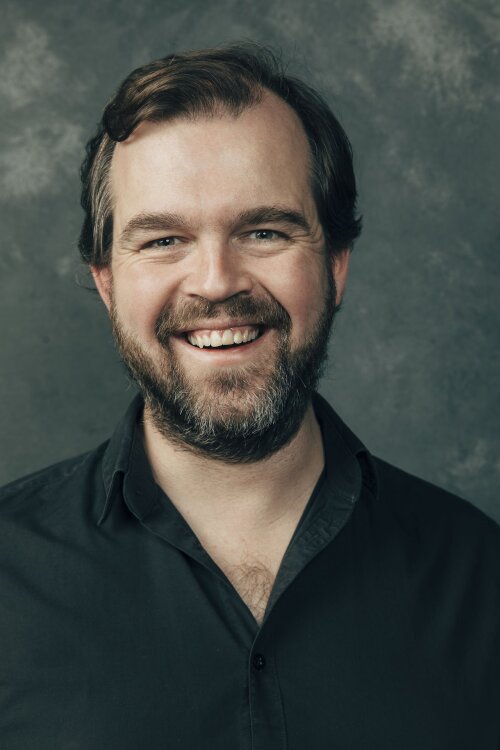
Biografie
Stijn Saveniers is een Belgische dirigent, onderzoeker en coach met een bijzondere focus op komische opera en muziektheater. Hij is artistiek leider van Volksopera, een Antwerps initiatief dat zich toelegt op het bewaren en innoveren van het komische repertoire.
Als doctoraatsonderzoeker aan het Koninklijk Conservatorium Antwerpen, ARIA en het Orpheus Instituut (docARTES) onderzoekt hij het gebruik van humor in operette. In mei 2025 verdedigt hij zijn proefschrift, La Grande Bouffe: uitdagingen in de uitvoering van muzikale komedie, met een uitvoering van fragmenten uit de Belgische operette Brueghelkermis.
Saveniers studeerde in Leuven en Maastricht, waar hij masterdiploma’s behaalde in cello en orkestdirectie. In Maastricht werd hem de Hustinckxprijs toegekend. Zijn werk bestrijkt opera, operette, oratorium en hedendaagse muziek, met onder meer samenwerkingen met het HERMESensemble en de Biënnale van Venetië.
Sinds 2023 is hij docent aan het Koninklijk Conservatorium Antwerpen, waar hij als repertoirecoach verbonden is aan de zangafdeling. Daarnaast werkt hij mee aan kritische uitgaven voor het Studiecentrum voor Vlaamse Muziek.
Foto © Filip Van Roe
The traditions of mandolin music in the regions of Asia Minor, Athens, the Ionian Islands and Crete - Maria en Elina Markatatou (15/05/2025)
Maria en Elina Markatatou
- 15 mei 2025, De Singel - Witte zaal - registreren niet nodig, live stream via deze link
- 16:00 - 17:40 Presentatie & Openbare verdediging (voertaal Engels)
- 17:40 - 18:20 Concert
- 18:20 - 19:10 Deliberatie, laudatio en afsluiting
- 19:10 - 21:00 Receptie
- Promotoren: Marc Jacobs (Universiteit Antwerpen), Liselotte Sels en Yves Senden (Koninklijk Conservatorium Antwerpen)
Abstract
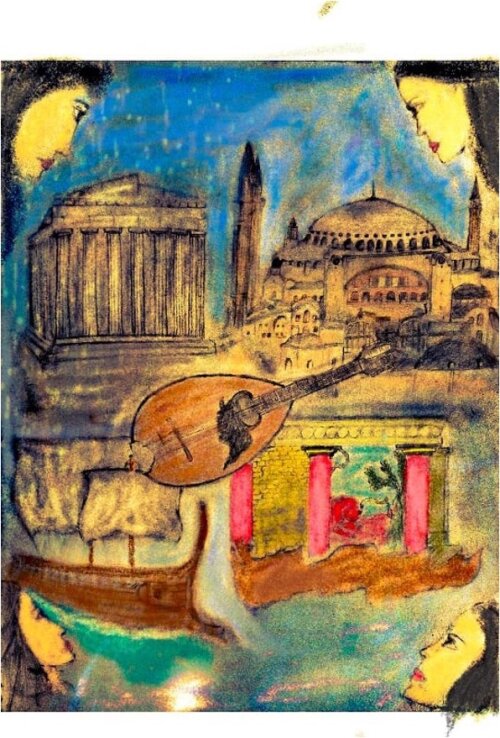
This study examines the mandolin’s presence, repertoire, and performance practices in three regions—Athens, the Ionian Islands, and Crete—as well as among Greek-speaking communities of Asia Minor. Each region has developed distinct mandolin-playing practices shaped by historical, social, and cultural influences. Despite their significance, these practices remain underexplored in academic research.
Employing a multidisciplinary methodology that integrates archival research, fieldwork, and artistic experimentation, the study explores the mandolin's role in these musical environments and its evolution from the late 19th century to the present. Historical and contemporary sources—including early recordings, manuscripts, oral histories, and performance practices— are examined to comprehensively understand these traditions.
The research focuses on several key areas:
- The mandolin’s role in the urban musical landscape of late 19th- and early 20th-century Athens and among Greek-speaking communities of Asia Minor, particularly in relation to Estudiantina ensembles in Asia Minor and Mandolinates in Athens.
- The repertoire and performance practices of the Ionian Islands, particularly kantades and their connection to local mandolin ensembles.
- The integration of the mandolin into Cretan musical practices, especially in relation to dance music and informal gatherings (parea).
This study addresses critical questions, such as: What are the characteristic performance techniques and musical idioms associated with these traditions? How have oral and written transmission processes shaped their repertoire and playing styles? What role has the mandolin played in the broader cultural and musical networks of these regions? How can artistic research methodologies contribute to understanding and disseminating these practices today?
As an artistic research project, the study engages with these traditions not only through historical inquiry but also through performance-based methods. By reconstructing repertoire, experimenting with playing techniques, and developing new approaches to teaching and interpretation, the research contributes to the transmission and revitalisation of these musical practices. The findings are disseminated through concerts, workshops, and educational materials, fostering cross-cultural engagement and contemporary artistic applications.
This research is conducted as a twin PhD, with each dissertation focusing on different aspects of these traditions. One dissertation examines the repertoire and performance practices of the Ionian Islands and Greek-speaking communities of Asia Minor, particularly how the mandolin was used in urban musical life before the Asia Minor Disaster of 1922 and how its traditions continued among musicians who immigrated to Greece. The other dissertation investigates the mandolin’s presence in Athens and Crete, exploring its historical role in Athenian Mandolinates and its integration into living musical traditions in Crete. By integrating historical analysis, performance studies, and artistic research, this study enhances the understanding of how these traditions developed, how they continue to evolve, and how they can be communicated to new audiences within and beyond Greece.
(image by Giorgos Andreou)
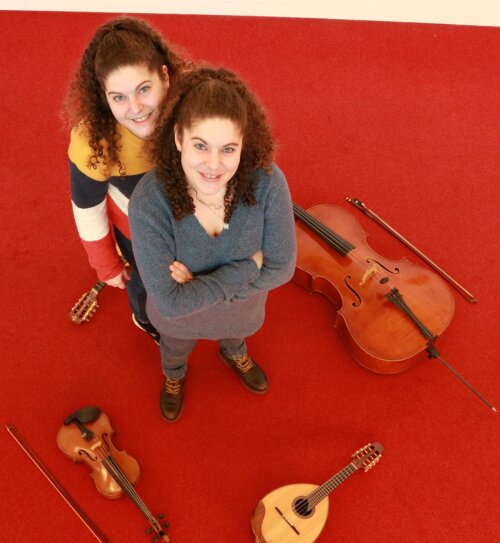
Biography
Elina and Maria Markatatou are mandolinists, educators, and artistic researchers based in Antwerp, Belgium. Originally from Heraklion, Crete, they both studied mathematics at the University of Ioannina while receiving formal music education in harmony and counterpoint at the Filippos Nakas Conservatory. Early in their careers, they performed extensively across Greece, engaging with a broad repertoire of urban and regional music traditions.
In 2013, they moved to Belgium to pursue advanced studies in mandolin performance at the Royal Conservatoire of Antwerp under the guidance of Professor Gerda Abts. Both obtained Bachelor and Master of Arts degrees in Music with distinction. Their Master’s research explored the four distinct traditions of mandolin music in Greece and laid the groundwork for their current doctoral projects.
Since 2019, they have jointly conducted PhD research in the Arts at the Royal Conservatoire and University of Antwerp. Their research focuses on the mandolin repertoire and performance practices of the Ionian Islands, Crete, Athens, and the Greek-speaking communities of Asia Minor. Their methodology draws on artistic research principles and combines embodied performance, transcription, archival investigation, and collaboration with musicians. Through this practice-led approach, they explore idiomatic techniques, processes of transmission, and the interplay between oral and written sources.
Alongside their research, they teach mandolin, chamber music, and music initiation at several music academies across Flanders. Beyond their academic work, Maria and Elina have given concerts, workshops, and masterclasses in Belgium, the Netherlands, Germany, Ukraine, and Greece. Their artistic projects include performances, collaborations with ensembles and mandolin orchestras, and educational initiatives engaging international participants.
(photo by Beatriz Laborda Gonzalez)
Inter-Relational Creativity. Fostering Collaborative Creativity through Skill-Based Training in Fashion Education - Andrea Cammarosano (02/04/2025)
Andrea Cammarosano
- 2 april 2025 - 15u, Koninklijke Academie voor Schone Kunsten Antwerpen - Campus Fashion, Nationalestraat
- Promotoren: Annick Schramme (Universiteit Antwerpen), Walter Van Beirendonck (Koninklijke Academie voor Schone Kunsten Antwerpen)
Abstract
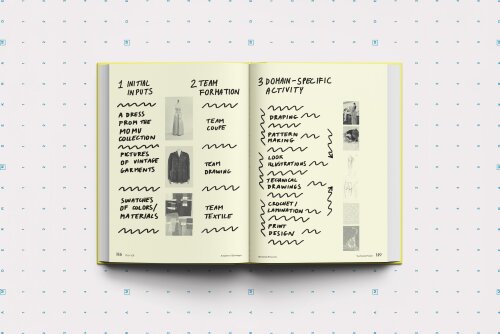
This research investigates the dynamics of creative collaboration within fashion education, focusing on the ideation process behind a fashion collection. While in the industry, this process relies on collaboration across diverse roles, skills, and ecosystems, fashion education often emphasizes an individual approach, with students undertaking all creative roles to develop a singular personal vision. The study examines the tension between the industry’s collaborative nature and education’s emphasis on individual creativity, aiming to develop models and strategies that foster collaboration in educational projects while enhancing both the creative process and its outcomes.
Creativity is a central aspect of this research. In the industry, it is a key factor behind the success of collections and careers, balanced with business, communication, and organizational strategies. In education, creativity is a cornerstone of the formative mission, emphasizing individual expression and personal growth. This is particularly evident in the Fashion Department at the Royal Academy of Fine Arts, whose alumni include renowned creative directors and designers. However, while their training focused on individual creativity, their success in the industry also depends on effective collaboration within teams. The research examines this collaborative aspect within the school environment to explore how individual and collective creativity interact in creativity-driven fashion education.
The entry point for this analysis is the notion of “Creative Languages.” These languages, as the research postulates, are linked to domain-specific skills but also facilitate the interaction and blending of personalities and styles, which are at the core of creative processes. Creative languages are central to the exchange of ideas and information between individuals during the ideation of a fashion collection. In this process, creativity operates at both the domain-general and domain-specific levels, with interpersonal interaction serving as a crucial factor in bridging these two dimensions. By analyzing this multi-dimensional framework, the study explores how the ideation of a fashion collection can evolve from an individual task into a collaborative process. The research specifically examines three creative languages—coupe, drawing, and textile design—which form the foundation of skill training at the Fashion Department.
By adopting this approach, the research provides insight into collaborative processes that integrate both social and material aspects. While many studies on collaborative creativity adopt sociological or humanistic perspectives, this research focuses on material culture as a medium for effective interpersonal exchange. The study integrates a multi-level theoretical framework, including individual creativity (Amabile, 1996), domain-specific versus domain-general creativity (Kaufman and Baer, 2005), and group creativity (Woodman, Sawyer, & Griffin, 1993).
The resulting model, termed the “inter-relational model,” provides a scaffold for skill-based training that nurtures both individual and collaborative creativity in fashion education.
(image: Photo Alessandro Di Palma; Styling Leonardo Persico; Post Production Gloria Torquati; Fabrics by Gruppo Cinque)
BOOK LAUNCH
Saturday 29 March 2025, at MoMu Antwerp
- 13:00 - 17:00 ongoing presentation of the book (at the MoMu Library)
- 16:00 Talk with Andrea Cammarosano and Johan Pas (at the MoMu Auditorium)
- 16:30 Talk with Andrea Cammarosano and Walter Van Beirendonck (at the MoMu Auditorium)
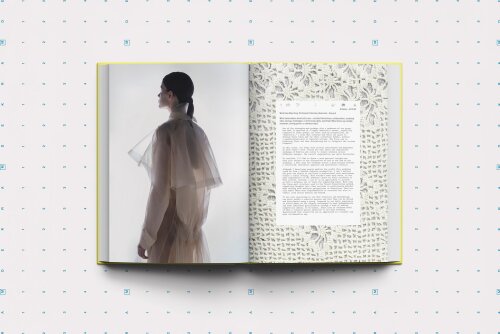
Form and Material in Visual and Auditory Perception - Amit Gur (9/01/2025)
Amit Gur
- 9 januari 2025, De Singel - Gele zaal - registreren niet nodig
- 17:00 – 17:30 Concert
- 17:30 – 19:30 Presentatie & Openbare verdediging (voertaal Engels)
- 19:30 – 21:00 Receptie (Witte Foyer)
- Promotoren: Erik Myin (Universiteit Antwerpen), Mathias Coppens (Koninklijk Conservatorium Antwerpen)
Abstract
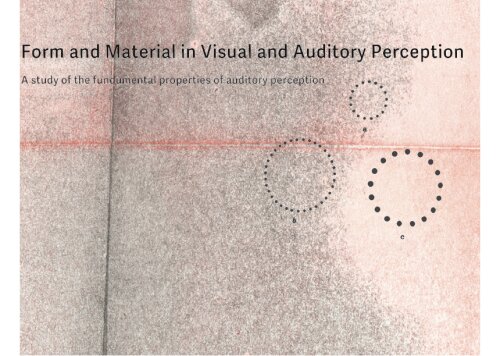
The primary objective of this research is to develop conceptual and empirical tools that defineform and material in the auditory realm. These phenomena are significant because theyprovide comprehensive descriptions of perceptual scenes. However, in auditory and musicalcontexts they are not clearly defined and remain open to interpretation. Terms like form,material, and texture, though commonly used in musicians’ discourse, do not refer toconcrete perceptual phenomena but rather describe music in schematic and general terms. Forinstance, two distinctly different pieces can both be described as having a polyphonic texture,a ternary form, and consisting of similar musical material (scales, rhythms, etc.).This thesis presents a theoretical framework that explains form and material in auditoryperception, based on models and principles from the visual domain. This approach posesseveral challenges stemming from differences between the modalities. For example, in thevisual domain, we perceive objects as being located in specific positions within space, andthis spatial information is central to our understanding of the scene. In contrast, in theauditory domain, the precise location of sound sources is less critical. We tend to focus on theinformation conveyed by the sounds themselves—such as their timbre, pitch, and rhythm—rather than where they are coming from. Another challenge is that in the visual context, formand material are associated with structures in two- or three-dimensional space, while in theauditory realm, time and aspects of sound, such as pitch, volume, and duration, are onedimensional.For these and additional reasons, defining auditory form and material cannot beachieved through a straightforward analogy to vision.
The starting point of my research is the study of visual form and material by the experimentalpsychologist Erich Goldmeier (1936/1972). Goldmeier developed an empirical model called“similarity with enlargement,” which explores perceptual features of visual form andmaterial. I begin by reviewing Goldmeier’s work along with other relevant studies on visualperception. Next, I propose a methodology for drawing analogies between the visual andauditory domains, that takes into account the differences between these modalities. Using thismethodology, I explore the properties of form and material in the auditory context andpropose my definitions for these properties. Finally, I present an auditory analogy to the“similarity with enlargement” model, supported by an empirical study.
The appendix to this thesis features an artistic portfolio in which products of this research(especially the notion of musical texture) serve as the departure point of the compositionprocess. This portfolio draws on my work as a composer as well as my experience teachingmusical perception and musical texture at the Conservatorium van Amsterdam.
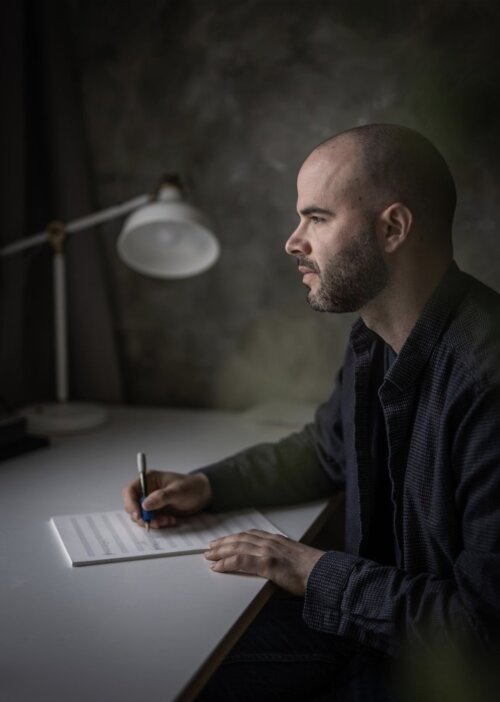
Amit Gur (1987) is a researcher and composer based in Amsterdam, where he teaches courses at the Conservatorium van Amsterdam related to his research. His composition work focuses on exploring texture in music, a theme he has developed through audiovisual installations, chamber ensemble compositions, and film scores. Amit's research bridges composition, Gestalt psychology, and analogies between visual and auditory perception.
Disarming Design - Politics of participatory practices - Annelys de Vet (29/11/2024)
Annelys de Vet
- 29 november 2024, Sint Lucas School of Arts (Showroom), Van Schoonbekestraat 143, Antwerpen - registreren niet nodig maar een bevestiging van aanwezigheid via annelys.devet@kdg.be wordt op prijs gesteld
- 14:30 Deuren en expo open
- 15:00 Presentatie en verdediging
- 17:00 Receptie
- Promotoren: Pascal Gielen (Universiteit Antwerpen), Petra Van Brabandt (Sint Lucas Antwerpen)
Abstract
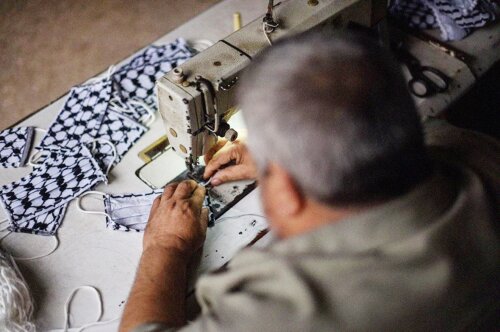
Image: Production of ‘Identity = health’ facemask, Gaza 2020. Photo: Abed Zagout
The public defence and the exhibition 'Disarming Design, politics of participatory practices' presents a dissertation, an installation and the series of Subjective Atlases along with objects from Palestine.
In our current political and economic landscape, sustaining an emancipatory design practice—one that aligns with progressive political beliefs and social values—poses significant challenges. My practice-based research explores how political agency can be strengthened in these conditions by engaging in participatory design processes.
The installation and dissertation document three long-term, self-directed, and participatory projects: a series of books (the Subjective Atlas series), a design label (Disarming Design from Palestine), and a master’s programme (Disarming Design at Sandberg Instituut). Each collaborative platform originated as a counterproposal that activates design as a methodology to amplify voices, mobilise communities, and create new opportunities. Aesthetics play a crucial role in this work, shaping the sensory, material, and emotional dynamics of our spaces, the materials we engage with, and the hospitality we practise.
By detailing the processes and outcomes of each of the three projects, from initiation to materialisation, and from distribution to impact, the dissertation offers an intimate and self-critical insight into the politics, tensions, and possibilities of participatory design practices. At the core is a drive to ask: How can design be liberated from the goal of finding ‘solutions’ and become a practice of agency and solidarity?
Anthony Braxton's Tri-Centric Thought Unit Construct and Post-War Western Art Music - Kobe Van Cauwenberghe (26/10/2024)
Kobe Van Cauwenberghe
- 26 oktober 2024 om 15u, De Singel - Witte zaal - Registreren niet nodig
- Ook online te volgen via volgende streaming link
- Promotoren: Pascal Gielen en Marlies De Munck (Universiteit Antwerpen), Miriam Overlach (Koninklijk Conservatorium Antwerpen)
Abstract
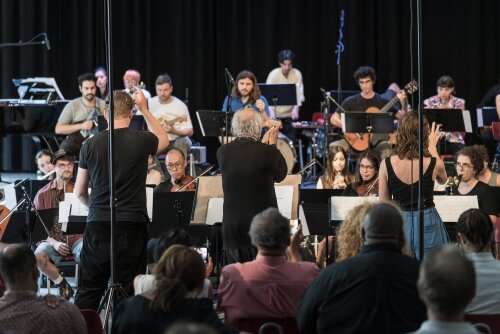
(foto Kristof Lemp)
The perception of the canon of post-war Western art music today is still strongly determined by a constructed dichotomy which keeps Western art music separate from evolutions and radical experiments in jazz and African-American music. The very extensive oeuvre and philosophical body of thought of the American composer Anthony Braxton, what he calls his Tri-Centric Thought Unit Construct (TCTUC), can be seen as the metaphorical elephant in the room. This unique oeuvre has been largely ignored to this day within the repertoire, discourse and performance practice associated with the canon of post-war Western art music. This research project takes Anthony Braxton's TCTUC as a starting point to see how I, as an interpreter of Braxton’s music, can contribute to a broadening of this canon.
My intention with this research is to provide artistic responses to the gaps within the existing discourse on post-war Western art music (see Braxton, Lewis, Piekut, Born, a.o.) by approaching a wide selection of Braxton’s compositions on his own terms. By putting these works as specific case studies on the agenda of relevant actors such as the conservatory, contemporary music festivals and concert series and through recordings and other media, I aimed to make a canon broadening possible through my practice as an interpreter. The results of this research, presented in the form of concerts, lectures, articles, workshops and recordings, are collected in a website published on Research Catalogue.
Hearing Glass: Synesthetic Correspondences in Music Based Audiovisual Art - Umut Eldem (22/10/2024)
Umut Eldem
- 22 oktober 2024, De Singel - Witte Zaal - Inschrijven niet nodig
- 16:30 – 17:00 Concert
- 17:00 – 19:00 Presentatie & verdediging
- 19:00 – 21:00 Receptie
- Voertaal: Engels
- Promotoren: Bart Eeckhout (Universiteit Antwerpen), Thomas Moore (Koninklijk Conservatorium Antwerpen)
Abstract
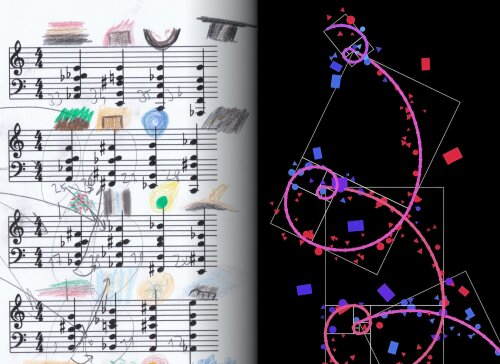
Hearing Glass is a research on the role of synesthesia and crossmodality in music-based audiovisual art. Weaving through the traditions of visual music, audiovisual instruments, and generative art, the project unfolds into a unique musical and audiovisual composition style.
The phenomenon of sound-color synesthesia, the experience of colors upon hearing sound, is the starting point of the research. An analysis of the works of synesthetic composers and audiovisual art reveals insights into novel concepts and techniques that bring sound and vision together in the compositional practice. The practice of audiovisual composition is then combined with new technology and creative coding in order to create performances, installations, and fixed-media works that contain synesthetic microcosms.
This research explores the transdisciplinary space between senses and disciplines, and the positioning of the musician and composer in this vast sea.
What do we need? Exploring how the creation and performance of new music can be regulating, healing, beneficial for wellbeing and provide self-care for neurodiverse musicians, including myself - Geoffa Fells (03/09/2024)
Geoffa Fells
- 3 september 2024 - 16:30, Koninklijk Conservatorium Antwerpen, Witte Zaal
- Promotoren: Henk de Smaele (Universiteit Antwerpen) en Thomas R. Moore (Koninklijk Conservatorium Antwerpen)
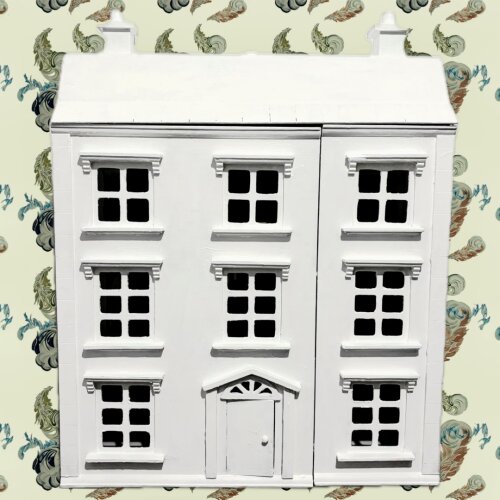
Abstract
Person who asks questions:
What is this PhD about??
Masha:
It’s about the fact that, because we have DID, there will be different answers to this question on different days.
Geoffa:
It’s about how I can forge a creative practice that enables me to care for myself and how a culture of care can enable under-heard, intersectional voices to be heard and shine in new music. It’s about how we have diversified facets of the neurosciences of safety (the Polyvagal Theory) including meditation, social interaction, play, and interactions with nature into modes of making, and how we’ve extended this to include empathy and care as modes of creation too. It’s about how I have embraced my multiplicity. You could call this radical inclusivity, but it also draws upon a culture of queering and critiquing current approaches to equality, diversity and inclusion. It’s about questioning everything that I am finding difficult, interrogating and asking, “Am I really the problem here?” Or is this just not accessible for me?
Ruby:
It’s a story told via wallpaper, white goods and furniture housed within the world of a doll’s house. The fridge is particularly riveting.
Edward:
I think our PhD has something to do with politics, but I don’t know the first thing about politics.
Geoffa:
This PhD is about knowing and not knowing. Understanding and not understanding. What we knew yesterday may not be what we know today. What we understand today, may hold no meaning tomorrow, but that’s okay. Our PhD is a baton carried by the different “me's", each with different types of intelligence. Some of us have taken our research forward by reading and dissecting written theories and academic texts; others have extended the research further using a scaffolding metaphor that engages them. The younger ones of us have looked at our research with highly emotionally intelligent and sensory perspectives. This PhD is about the benefits and approaches to radical inclusivity when the starting point is the inclusion of all the voices of one’s own mind.
Ruby:
It’s about world-building and imagination. My imagination is a safe haven where I can dream up the things that I need, from deep pressure squeezes to a number system or language that makes more sense. There are many things I need that feel completely out of reach in the real world.
Geoffa:
It’s about how the voices highlighted in my PhD, including my own, have been historically under-heard because they fall outside of society’s definition of ‘normal’ as shaped by capitalism. The ways in which we have included these voices has seen us working collaboratively and in ways that defy traditional artistic and productive values. For Sophie, every day is a foggy day, I used to consider her contributions, like her layering layering of sellotape, a waste of time, lacking in artistic value, but now I value her perspective of blankness, it’s almost like being in a sensory deprivation chamber. Her experience creates space for new, fresh ideas to emerge from the fog.
Masha:
It’s about frames, language, and perspective. How is an artwork interpreted in the bathroom of the doll’s house versus the attic? What is its title? What are our associations with these words and spaces that change the way we perceive colour, shape, or sound? How are these perspectives shaped by our previous experiences, our identities and our comfort zones.
Geoffa:
It’s autoethnographic. I am making art that will meet my needs and regulate me as a neurodivergent artist and so I share my growing awareness of how my needs today have been shaped by negative attitudes within mental health, social class, the gender binary, ableism, misogyny and trauma.
Sophie:
This PhD is about validating and acknowledging that my feelings are real and important.
Geoffa:
It’s about reducing shame.
I started this PhD on the topic of Artistic Activism for the Rights of Women and girls. I was very uncomfortable with my initial research topic because as a non-binary person, I have never felt or identified with being a woman or girl and I felt like my artistic output was being interpreted and talked about in ways that were further scaffolding the gender binary in harmful ways. I deliberately ignored the feelings of discomfort because I was in an academic space that people like me, with a background like mine don’t usually enter and I wanted to do well and please. This PhD is about the journey of me discovering my research topic through the gradual uncovering of how my own art can meet my needs.
BIO
Geoffa Fells is a composer, visual artist and PhD researcher at the Royal Conservatoire of Antwerp. They use a blend of traditional scoring, electronics and multi-sensory art to compose new music that is inclusive of under-heard voices through collaborations with fellow neurodiverse artists and working with children with severe and complex needs.
Geoffa completed a Masters and Fellowship at Guildhall where they received the ‘Starred Award for Exceptional Performance’. In 2021, they were awarded Arts Council funding to write their multi-sensory opera ‘Express Yourself’ and was one of six Guildhall graduates to be awarded the ‘Futures Fund’ award to compose a new piece exploring how social connection, play, and meditation techniques can be diversified and explored as modes of creation. Most recently, they have been awarded Arts Council funding again to create collaborative work with their ensemble of neurodiverse musicians called ‘Nth Tangent’. Recent presentations of their work have included the ARTICULATE Festival in Antwerp as well as the TATE Modern and Barbican’s OpenFest in London.
Ciné Place-Making - Robin Vanbesien (02/07/2024)
Robin Vanbesien
- 2 juli 2024 - Inschrijven verplicht via robin.vanbesien@kdg.be
- 15:15 Deuren open Cinema Lumière in FOMU, Lakenstraat 14, 2000 Antwerpen
- 15:30 Start filmvertoningen van de twee films die deel uitmaken van het doctoraatsproject: ‘The wasp and the weather' (2019, 19’) en ‘Hold on to her’ (2024, 80’)
- 17:15 Einde filmvertoningen
- 17:45 Deuren open Zaal Zirkus bij Fameus en De Connectie, Zirkstraat 36, 2000 Antwerpen
- 18:00 Start publieke verdediging
- 20:00 Receptie (met diner)
- 21:00 Einde
- 15:15 Deuren open Cinema Lumière in FOMU, Lakenstraat 14, 2000 Antwerpen
- Promotoren: Pascal Gielen (Universiteit Antwerpen) en Wesley Meuris (Sint Lucas Antwerpen)
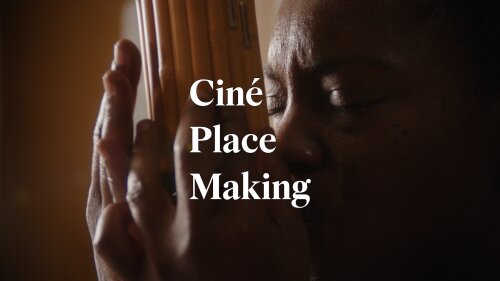
Abstract
In het artistieke doctoraatsonderzoek Ciné Place-Making exploreert Robin Vanbesien, via diverse artistieke processen en projecten, verschillende cinematografische manieren om praktijken van 'plaats-maken' te ondersteunen. Deze praktijken ontstaan in diverse grassroots-initiatieven, netwerken en sociale bewegingen wanneer mensen zich tegen de onderdrukkende contexten verzetten waartoe ze onvrijwillig gedwongen zijn. Dit verzet is een reactie op de blijvende erfenissen van koloniaal raciaal kapitalisme.
Vanbesien verkent hoe de relatie tussen cinema en deze plaats-maken praktijken kan worden uitgewerkt. Hij ziet cinema als een collaboratieve praktijk die nieuwe verbindingen kan laten ontstaan in plaats van dominante betekenissen en subjectiviteiten te versterken. Deze benadering is cruciaal om te onthullen hoe dominante representaties de processen en instituties van macht verdoezelen die mensen verschillend discrimineren en ontmenselijken. Het is essentieel om een cinema voor te stellen die begint met een weigering om te conformeren aan de taal, wensen en termen van deze dominante representaties. Vanuit dit perspectief onderzoekt Vanbesien hoe cinema een methode kan bieden om de wereld anders te zien. Hij onderzoekt hoe cinema kan helpen bij het herwinnen van collectief verlangen, intensiteit en verbeelding voor degenen die betrokken zijn bij plaats-maken praktijken. Hij stelt ‘ciné place-making’ voor als een manier om collectieve verbeeldingen te oefenen, speculerend over nieuwe benaderingen voor het creëren van concrete ruimten voor even leefbare levens en bewoonbare toekomsten.
Hoe kan cinema manieren bieden om het sociale collectieve lichaam en de zintuiglijke verbeelding van een gesitueerde praktijk van plaats-maken te erkennen, herwaarderen, herassembleren, oefenen en herverdelen? Hoe maak je een cinema die voortkomt uit herassemblage en recreatie met assembleurs die nabij deze gesitueerde praktijken van plaats-maken spreken en handelen? ‘Ciné place-making’ is een cinema van onvolledigheid. Het is een soort imperfecte cinema, die (nieuwe) sociale assemblages initieert. Hoe bij te dragen aan de voortdurende herverdeling van zo'n cinema van plaats-maken?
Het onderzoek, dat van 2018 tot 2024 liep, omvat drie artistieke projecten: 'The wasp and the weather' (2018-2020), 'Ciné assemblies' met The Post Film Collective (2020-2023) en 'Holding Rehearsals' (2021-2024). Deze projecten resulteerden in cinematografische uitkomsten die een lens en een scherm omvatten - films en videoinstallaties - maar ze omvatten ook manieren van delen en presenteren zonder deze, voor en na – in de vorm van studiecirkels, workshops, performances, bijeenkomsten, archieven en installaties.
100 jaar surrealisme - Een artistiek vormonderzoek in het creatief schrijven aan de hand van de surrealistische creatiemethoden - Vincent Van Meenen (21/06/2024)
Vincent Van Meenen
- 21 juni 2024, Kapel Klooster van de Grauwzusters, Universiteit Antwerpen. Inschrijven niet nodig.
- 09:30 Inloop
- 09:40 Uitreiking Maarten Inghelsprijs 2024 en Vincent Van Meenenprijs 2024
- 10:00 Publieke verdediging
- Promotoren: Bart Eeckhout (Universiteit Antwerpen) en Clara Van den Broek (Koninklijk Conservatorium Antwerpen)
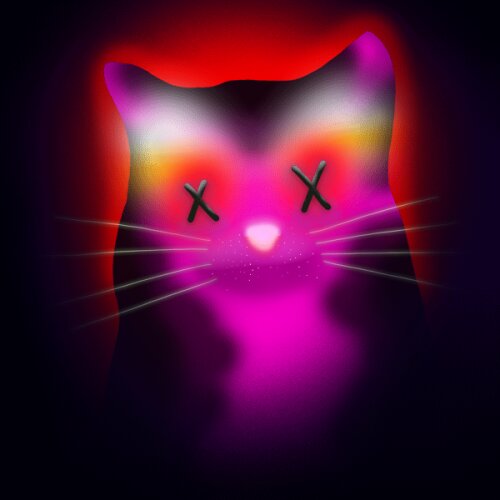
Abstract
Dit onderzoek is gewijd aan mogelijke verbanden tussen Creative Writing en het creëren van hedendaagse kunstwerken, beschouwd vanuit de pogingen van de surrealisten om het onbewuste (niet tot voorspelbare regels te reduceren) element van het scheppingsproces zichtbaar te maken en te valoriseren.
De afgelopen vier jaar heb ik aan de hand van de surrealistische creatiemethodes geprobeerd om mijn eigen schrijven te veranderen.
Eerst heb ik de surrealistische creatiemethodes toegepast met kinderen, studenten en jongeren.
Vervolgens heb ik gekeken hoe hedendaagse kunstenaars die surrealistische methodes vandaag nog toepassen, en heb ik hierover bericht in kunst- en literaire tijdschriften.
Daarna heb ik aan de hand van samenwerkingen en gesprekken met andere auteurs, theatermakers, beeldend kunstenaars, muzikanten, game-ontwikkelaars en designers een andere manier van schrijven ontwikkeld, waarbij ik proza vormgaf in verzen.
Uit dat proza in verzen ontstonden twee romans, EU (Track Report, 2021) en 0xBlixa (Das Mag, 2023).
Tot slot heb ik in een reflectieve bijlage gereflecteerd over mijn bevindingen.
Informed Phrasing - Nadav Katan (24/05/2024)
Nadav Katan
- 24 mei 2024 - 10u00, Gele zaal, Koninklijk Conservatorium Antwerpen. Inschrijven niet nodig.
- Promotoren: Bart Eeckhout (Universiteit Antwerpen) en Frank Agsteribbe (Koninklijk Conservatorium Antwerpen)
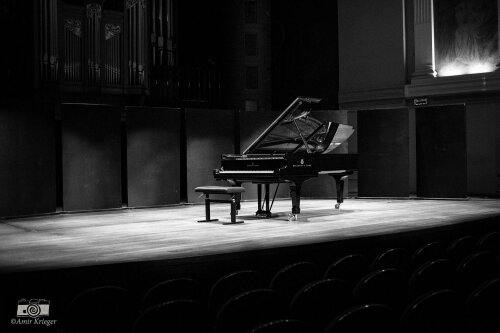
Abstract
'Informed Phrasing' was an artistic research project that delved into the intricate and often contentious relationship between music analysis and performance from an artistic, performative standpoint. With a primary focus on the Phrasing aspect of musical performance, the project explored the points of contact and interactions between Schenkerian analysis, Gestalt psychology, musical performance, and embodied music cognition. Through this exploration, a performative-analytical process emerged, firmly grounded in performance experience, with the aim of stimulating individual creativity and fostering expressivity.
Partisans of the Real - Els Dietvorst (02/05/2024)
Els Dietvorst
- 2 mei 2024, 15u, Koninklijke Academie voor Schone Kunsten Antwerpen, De Wintertuin
Om de verdediging bij te wonen, graag een bericht aan: els.dietvorst@ap.be. - Promotoren: Pascal Gielen (Universiteit Antwerpen) en Johan Pas (Koninklijke Academie voor Schone Kunsten Antwerpen)
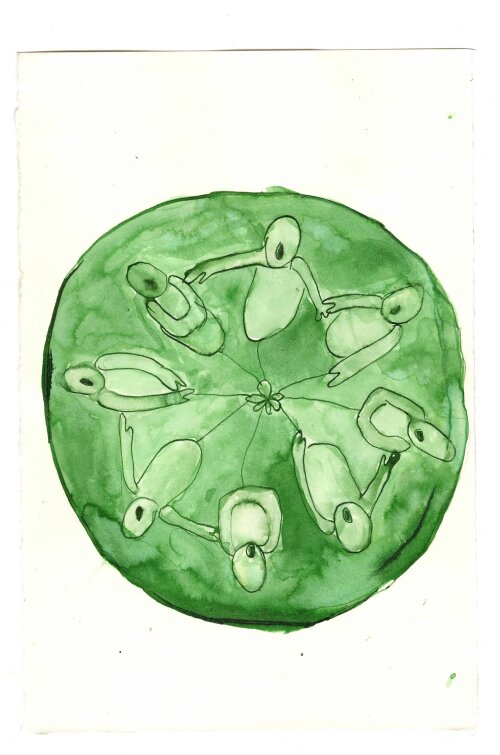
Partisans of the Real
How art can strengthen the individual and play a role in the transition to a socially just, sustainable society
Abstract
“To be a human being among people and to remain one forever, no matter in what circumstances, not to grow despondent and not to lose heart—that’s what life is all about, that's its task.”(Fyodor Dostoevsky)
My work is driven by an ongoing exploration—a quest for beauty, a connection to the collective subconscious, and what I see as the 'missing link' between art and society. I truly believe in the link between art and society. This goes beyond the narrow institutional focus on issues like poverty, exclusion, and marginality, encompassing broader social and human concerns. These include life stories, interpersonal dialogues, migration, cultural diversity, human aspirations, and the broader spectrum of the human condition in the society of today. This also incorporates the impact on human nature of a predominantly capitalist and Western society which leads to major themes such as life and death, anxiety, alienation and desire. I view art as a poetic and vital force that generates diverse dynamics, serving as a social process and a catalyst for uniting individuals from varied backgrounds. My work frequently reveals what often remains invisible, preferring wonder to denunciation.
Experiment & serendipity, primal intuition and dialogue are the foundations of my work. I firmly believe in the role of art as a catalyst serving to bridge social divides and enhance social cohesion. My work has the power to work across diverse communities, artists and non-artists transcending boundaries and barriers. In this sense I perceive art as a collaborative effort—an amalgamation of shared experiences, warmth, and vitality arising from people coming together. It is within this collective engagement that art takes form, evolves, and becomes a dynamic force.
My approach to creation is holistic and inclusive, permeating the world, embracing both the living and the deceased, as well as overlooked objects and people. Working collaboratively allows me to connect with individuals from diverse backgrounds, bridging boundaries of culture and societal norms. All these experiences contribute to my growth as both a human and an artist.
My aim is to stimulate a new ethical consciousness and promote a form of spirituality in which humanity does not dominate society, but rather exists as a small part of the natural world. In this view, individuals have the opportunity to transcend their physical and sensory experiences by living less rationally and more intuitively.
Working holistically and regeneratively, this interaction has led to the emergence of a new form of art. The objective of this emerging art form is to actively participate in the entirety of social reality, transcending boundaries between artists, institutions, urban and rural environments, and public spaces, ultimately fostering empowerment.
(Els Dietvorst, April 2024)
Studies in Kunstvakidiotie - Mirjam van Tilburg (20/02/2024)
Mirjam van Tilburg
- 20 februari 2024 - Buitenplaats Brienenoord, Rotterdam. Registratie is verplicht via m.vantilburg@fontys.nl.
- 11:30 Inloop
- 12:00 Doctoraatsverdediging
- 14:30 Lunch en receptie
- 17:00 Einde
- Promotoren: Pascal Gielen (Universiteit Antwerpen) en Indra Wolfaert (Koninklijke Academie voor Schone Kunsten Antwerpen)
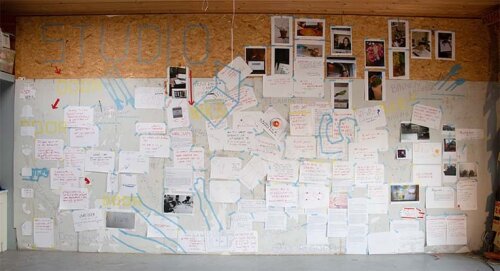
Abstract
Mirjam van Tilburg doet een poging om het dominante beeld van leven-lang-ontwikkelen (LLO) voor kunstvakdocenten te verschuiven. Dit onderzoek is een zoektocht naar de mogelijkheden die LLO biedt voor de oefening in kunstvakidiotie. Het woord ‘studies’ in de titel is schetsmatig, waar herhaling en verband zoeken in verscholen zit, en bovenal is het een afgeleide van studio en studeren.
Vijf essays vormen de piketpalen van deze hybride dissertatie. Samen construeren ze een verhaal. Het essay (onder)zoeken in de kunsteducatie beschrijft de werkwijzen en waarden die voortkomen uit de artistieke praktijk van Mirjam van Tilburg: onderwijs. De drijfveer achter dit onderzoek is het door kunstvakdocenten als beperkt ervaren LLO-aanbod. In het essay LLO als commoning praktijk worden de mogelijkheden van commoning praktijken besproken. De voorbeelden: The New School Collective en de studio’s worden hierin uiteengezet. De studio’s zijn het experiment binnen dit doctoraatsonderzoek. In de winter van 2020-2021 werkte Mirjam van Tilburg met tien kunstvakdocenten. Samen bezetten ze kunstenaarsstudio’s in Tilburg en Rotterdam om te de-automatiseren en te kijken naar de onderwijspraktijk. Het experiment van dit doctoraatstraject viel samen met de coronacrisis. Herontdekking van Kunstvakidiotie is het verhaal van een verandering van het vakmanschap van kunstvakdocenten in het eerste coronacrisisjaar.
In die studio’s hadden de kunstvakdocenten één houvast: kunstvakidiotie. Deze essays bevragen de efficiënte en productieve orde die heerst in de werkomgeving en LLO van kunstvakdocenten. De essays Blik en Tijd stellen daarom twee gespreksonderwerpen binnen LLO voor:
de ‘esthetische blik’ en de tijdservaring van ‘onderbreking.’
Om het experiment van dit doctoraatstraject te realiseren, hebben de volgende partners bijgedragen: Willem de Kooning Academie Hogeschool Rotterdam,
Fontys Academy of the Arts, KCR, Kunstloc Brabant, Stichting Ateliers Tilburg.
JAZZ HANDS - Open Hardware Hybrid Saxophone System - Andrew Claes (21/12/2023)
Andrew Claes
- 21 december 2023, Koninklijk Museum voor Schone Kunsten Antwerpen - voertaal Engels
- 19:00 - 19:45 Presentatie door Andrew Claes
- 20:00 - 21:00 Concert door Andrew Claes, featuring Goeyvaerts String Trio + Pieter Leenaerts
- 21:00 - 22:00 Doctoraatsverdediging met aansluitend receptie
- Promotoren: Steven Latré (Universiteit Antwerpen) en Kurt Van Herck (Koninklijk Conservatorium Antwerpen)
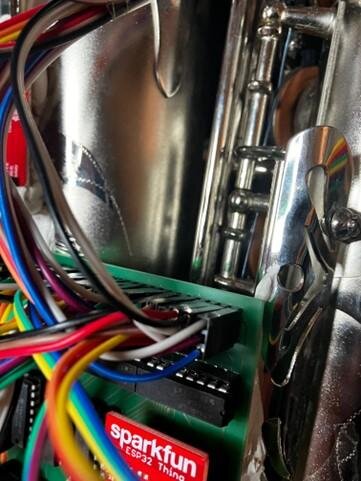
Abstract
Deze onderzoeksreis doorkruist de gebieden van muziek, technologie en innovatie, met als hoogtepunt de creatie van een baanbrekende hybride saxofoon. Het project ontvouwt zich in een multidimensionaal verhaal, waarin technische expertise, artistieke verkenning en een zoektocht naar een mogelijke toekomst van muzikale expressie met elkaar verweven zijn.
De reis begint met de transformatie van de student van een muzikant in een aspirant-ingenieur, gevoed door de visie van een nieuw instrument. Het kernidee combineert het traditioneel saxofoonvakmanschap met baanbrekende technologie, door de integratie van sensoren die mechanische bewegingen overbrengen naar het digitale domein, waardoor de saxofoon wordt opgewaardeerd tot een volwaardige MIDI-controller, zonder afbreuk te doen aan de oorspronkelijke akoestische eigenschappen van de saxofoon. Het onderzoek documenteert het verloop van elke fase, van zelfstudie in het digitale landschap tot de ontwikkeling van een werkend proof-of-concept model.Het prototype wordt onthuld tijdens een concert met het Goeyvaerts String Trio in het Koninklijk Museum voor Schone Kunsten in Antwerpen. Dit doctoraatsonderzoek is een baanbrekende mijlpaal op het snijvlak van kunst en technologie. Het boekstaaft de reis van beginner tot vernieuwer, waarbij kennisverwerving, prototyping en artistieke expressie met elkaar verweven worden.
Hearing a Culture: Integrating Sound and Environmental Elements of Braga's Festivities into new compositions - Carlos Brito Dias (14/12/2023)
Carlos Brito Dias
- 14 december 2023, De Singel - Witte zaal
- 19:00 Concert with pieces by Carlos Brito Dias, followed by the PhD defence
- Om de verdediging bij te wonen, graag een bericht aan carlos.cbrito.gdias@gmail.com.
- Promotoren: Pascal Gielen (Universiteit Antwerpen), Thomas Moore (Koninklijk Conservatorium Antwerpen)
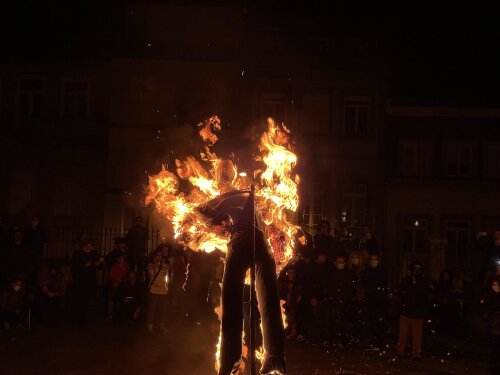
Abstract
This research explores the creation of contemporary musical compositions inspired by traditional soundscapes. Drawing upon personal experiences and hometown traditions, the project delves into ethnomusicologist Veit Erlmann's concept of 'hearing a culture'. The sonic environments of traditional festivals, often dismissed as mere background noise, are carefully captured and analyzed, serving as a rich source of inspiration for new musical pieces. Each celebration that sparked the composer's creative spark possesses a unique auditory landscape, prompting solitary sonic immersions to fully absorb the intricate tapestry of sounds that define these moments. The project reflects on the profound influence of hometown traditions on the composer's journey and their integral role in shaping identity, guided by the concept 'from-roots-to-routes' (S. Hall). This transformative process enabled the development of a distinctive stylistic language that harmoniously echoes the composer's heritage and experiences.
Blurry Scanning - Anton Cotteleer (19/10/2023)
Anton Cotteleer
- 19 oktober 2023, 14u -16u, DE STUDIO
- 13:30 - doors open - gathering in the 'Salon' (first floor)
- 14:00 - guided tour in the exhibition ‘Out-of-Focus II’
- 14:30 - doctoraatsverdediging - om de verdediging bij te wonen, graag een bericht aan: anton.cotteleer@ap.be
- Promotoren: Gert Verschraegen (Universiteit Antwerpen), Ria De Boodt (Koninklijke Academie voor Schone Kunsten Antwerpen)
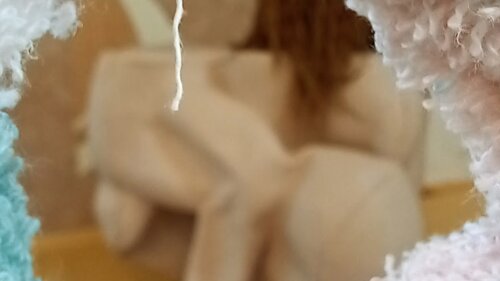
Abstract
The phantom statute of the unsharp, its relationship to our memories, its intimate character and openness for interpretation is what attracts Cotteleer in the blurry. After investigating the meaning of the blurry and the sharp within photography, he looked as a sculptor how the sharp and unsharp relate to sculpture. In this he developed a well-founded personal vision about 'the blurry' or the unsharp. In the project, he analysed how analogue family photos from the 1970s and 1980s, from both personal and anonymous photo albums, could become blurred and how this lack of focus determines our perception of the images. He created new photographs through the act of enlarging and cutting. These new images brought forth mysterious, occasionally broken shapes that were unrelated to the intended subject of the original family photo. They triggered unexpected emotions and memories that paved the way for new interpretations.Based on these new images, he created tactile sculptures and installations that are characterized by blurriness. How do sharpness-unsharpness relate to the memory that takes shape through visual media such as family albums? What is the role of focus and blurring in sculpture versus photography? And what is the impact of this effect on our memories and emotions? How does sharpness-unsharpness relate to the tactile space and how does 'being embodied' in a tactile environment relate to the sculptural? How does this relate to other media? These are just a few research questions he dealt with. By the exhibition ‘Out-of-Focus II’ at DE STUDIO and the publications ‘An Out-of-Focus Scan, part 1’ and ‘An Out-of-Focus Scan, part 2’ Cotteleer gives both visual and theoretical answers to the questions.
Publications
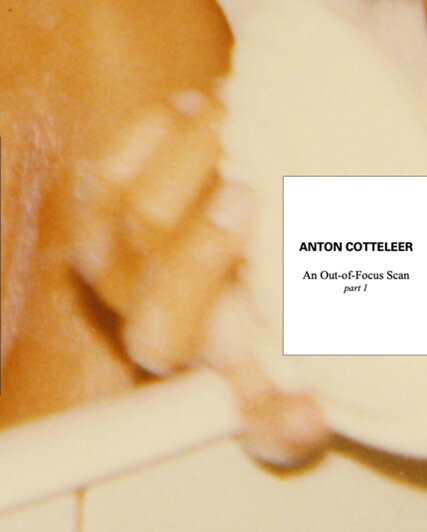
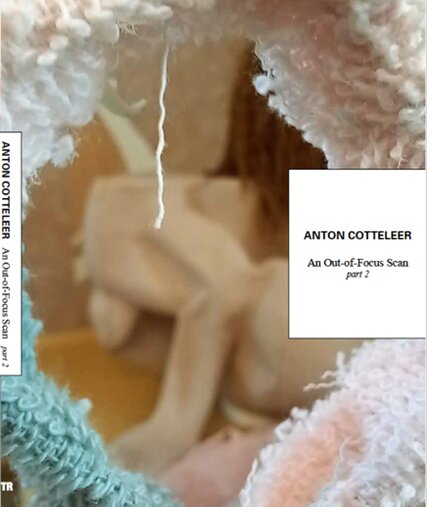
Tussen ik en jij. Over de attitude van de audiodocumentairemaker - Katharina Smets (20/05/2023)
Katharina Smets
- 20 mei 2023, 15u -17u30, De Singel - Witte zaal
- 15:00 - lecture performances
- 16:00 - doctoraatsverdediging (voertaal Engels) - om de verdediging bij te wonen, graag een bericht aan katharina.smets@ap.be.
- Promotoren: Pascal Gielen (Universiteit Antwerpen), Luk Van Den Dries (Universiteit Antwerpen), Clara Van Den Broek (Koninklijk Conservatorium Antwerpen), Martine Huvenne (Hogeschool Gent)
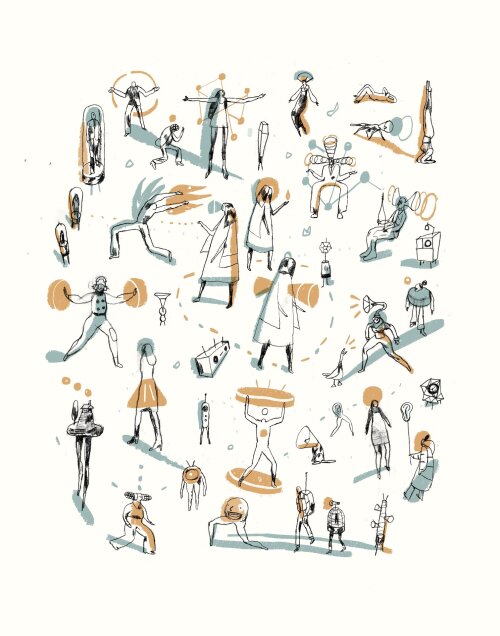
(illustratie Randall Casaer)
‘In den beginne is de relatie’, schrijft de filosoof Martin Buber in zijn boek Ik en Jij, ‘als bereidheid, een pakkende vorm, een model voor de ziel.’ Door mijn keuze van gesprekspartners heb ik in dit essay een eigen klein collectief van gelijkgestemden samengebracht. Van hen heb ik door deze jaren heen geleerd en verschillende inzichten toegepast op mijn werk. Ik maakte een beweging van een focus op het Ik naar een open houding richting Jij. Kaitlin Prest vertelde me over de overtuiging waarmee ze de werkelijkheid van haar intieme leven met haar luisteraars deelt. Jonathan Goldstein baseert zijn ik-verteller op een literaire traditie en denkt vrij van de journalistieke wortels van het medium. Door naar zijn werk te luisteren, leerde ik een sluitend personage neer te zetten van mijn verteller en literaire middelen te gebruiken wanneer ik schreef voor de stem van die verteller. Rikke Houd is de meester van de metafoor en toonde me hoe ik met meer beeldspraak soms net dichter bij de waarheid kan komen. Maartje Duin herinnerde me aan het belang van de journalistieke wetten in ons vak en hoe ze een leidraad kunnen zijn in onze omgang met de ander. Ethische journalistiek kan ons behoeden voor een egocentrische focus op het Ik. Het bracht me bij de vraag naar wat echt luisteren nu eigenlijk is en wat de consequenties daarvan kunnen zijn. Ik keerde terug naar Eleanor McDowall en Alan Hall, die ik leerde kennen in mijn vormende jaren als maker. Ze herinnerden me eraan dat ik misschien niet altijd de hoofdpersoon moet zijn in mijn werk en hoe ik dan toch de kracht kan bewaren om een bepaalde werkelijkheid te tonen. Die dynamiek is echter ook wederkerig. Ik heb verantwoordelijkheid af te leggen als maker in een machtspositie. Ik kan kiezen voor een echte ontmoeting met de mensen die ik interview en een voortgezette dialoog met mijn publiek. In deze zoektocht naar Ik en Jij heb ik mijn eigen attitude gevonden. Ik beweeg niet alleen, ik word ook bewogen. Ik moet bereid zijn me door de ontmoeting in mijn documentaire werk te laten veranderen. Ik volg Martin Buber wanneer hij schrijft: ‘Terwijl ik verwerkelijk, ontdek ik.’
De la modélisation à la notation - Composer le geste avec les nouvelles technologies dans les œuvres musicales transdisciplinaires - Alireza Farhang (21/01/2023)
Alireza Farhang
- 21 januari 2023, Université Côte d'Azur, Nice
- Taal verdediging: Frans
- Promotoren: Jean-François Trubert en François Paris (Université Côte d'Azur), Kurt Vanhoutte (Universiteit Antwerpen), Frank Agsteribbe (Koninklijk Conservatorium Antwerpen)
Abstract
Lorsque le geste devient l’élément moteur du discours musical, le compositeur exprime une pensée musicale qui sort du cadre conventionnel fondé sur les paramètres classiques hauteur-durée-intensité. Par conséquent celui-ci doit établir de nouvelles stratégies pour pouvoir noter des idées plus en phase avec son expression. Cela devient plus important encore lorsqu’il s’agit d’œuvres transdisciplinaires où l’érosion des frontières entre les arts et où la fusion des formes artistiques d’ordre très différent donnent naissance à un discours artistique multidimensionnel qui ne peut pas être uniquement représenté par une notation conventionnelle. Dans les années 1950, les compositeurs américains comme John Cage d’une part, et les compositeurs européens comme Dieter Schnebel d’autre part, ont mis en place tout un système de signes graphiques pour représenter leur langage musical. Dans les partitions de Mauricio Kagel, la notation de l’espace scénique et de la présence du corps du musicien occupent la même place et entrent en tension avec le contenu musical. Si la représentation graphique de la musique en tant que support d’exécution peut être considérée comme une aide aux interprètes, qu’en est-il alors lorsque la notation devient l’agent actif du processus de la composition d’une œuvre ? Cette thèse de création développe les recherches artistiques effectuées à l’occasion de la composition de trois œuvres, dont une de théâtre musical, en les situant dans un paysage où coexistent d’autres systèmes de pensée esthétique et technique. Après avoir abordé une discussion autour de la recherche artistique et le rôle des nouvelles technologies dans la création musicale, ainsi que son aspect éthique, sociale et politique, sera exposé le contexte artistique dans lequel le geste sonore devient l’élément central du discours musical des œuvres de l’auteur. Le premier volet de ce doctorat prend appui sur l’écriture d’une pièce vocale dont le processus de composition est axé sur la notation du geste de la parole entant qu’outil de composition. Les recherches effectuées à cette occasion ont par la suite servi pour la composition d’une œuvre de théâtre musical où le geste vocal et le geste sonore sont étroitement liés aux gestes physiques. La conception d’une « partition hybride » demeure au cœur de ce deuxième volet. Ce type de « partition hybride » comprend des éléments extramusicaux, notamment le texte et la dramaturgie ; la représentation graphique des gestes ; l’aspect technique (l’électronique) ; et bien sûr la musique. Quant au troisième et dernier volet, il s’agit d’un concerto pour flûte et orchestre où la masse sonore devient vecteur des profils gestuels de l’instrument solo.
Pharmakos. Adornment as a social tool - Vivi Touloumidi (8/12/2022)
Vivi Touloumidi
- 8 december 2022, auditorium M HKA
- 16:30 - doctoraatsverdediging (EN) - to attend the PhD defence, please send an email to info@vivitouloumidi.com
- 18:30 - receptie
- 19:00 - opening tentoonstelling 'Pharmakos. Adornment as a social tool'
INBOX at M HKA
- Promotoren: Roel Arkesteijn (Koninklijke Academie voor Schone Kunsten Antwerpen), Pascal Gielen (Universiteit Antwerpen)
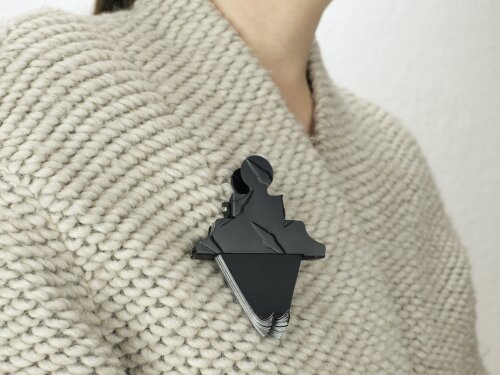
Abstract
In ancient Greece, “Pharmakon”, was a chosen individual, who was selected through common consensus by its community. The person was either sacrificed as a means of purification for the city, or it was ostracized away from the region. Its exile was perceived as a societal catharsis. It relates to the historical ritual of the ‘scapegoat’, which has come to mean any group or individual that innocently bears the blame for others in times of social conflict and crisis. The term derives from the Greek φάρμακον (pharmakon), which can act both as the remedy and the poison.
The PhD research and accompanying exhibition, 'Pharmakos', at M HKA museum (9.12.22-8.1.23) investigate this societal phenomenon through the lenses of adornment. The starting point is the archival research conducted by the artist, mostly at the Bundesarchiv in Berlin. She looked at WWII administration letters, where Nazi bureaucrats discussed the development of wearable signs used on human bodies in order to systematize their (id)entities in forced-labor camps. The display on these badges conditioned diverse bodies according to the value system and hierarchical logic of the regime and its allies. The color-coded signs determined the unwelcome in society. Or even distinguished the welcome.
While acknowledging similar locations of thought emerging globally today that attack self-determination, once again, Vivi Touloumidi investigates adornment as an active agent to address social discomfort, repression, and marginalization in the public realm. Her work appropriates signs of stigmatization employed during WWII and proposes wearable pieces that speak of resilience to support a practice of creative resistance. These statement-pieces are made for the emancipation of the female body and the social body. Adornment is seen as an instrument of empowerment, articulating processes of becoming and existing otherwise.
Bodies of knowledge - How to claim public space as a platform for the exchange of non-dominant or suppressed knowledge - Sarah Vanhee (24/09/2022)
Sarah Vanhee
- 24 september 2022, De Singel - Witte zaal, Antwerpen
- 15:00 Artistieke presentatie: BOK session with Flore Herman and Sarah Vanhee
BOK (bodies of knowledge) is a place where people can learn from each other. Things one usually does not learn, told by voices that are not always heard, from different parts of society and the world. In BOK we exchange knowledge that feeds a more just and humane society. It is a space to listen, to ask, to connect. BOK welcomes life experts rather than professional authorities. As a semi-nomadic classroom, BOK stays in the same spot in the city for a few weeks or months, and then moves on again.
Usually, BOK is to be found in public squares. Exceptionally, a fictional version of the nomadic classroom will be evoked in the conservatoire of Antwerp. Flore Herman, member of the BOK team, will invite Sarah Vanhee to share her knowledge on “Claiming space for the exchange of non-dominant knowledge (in a tent)”.
This listening session follows the regular BOK protocol. Everyone is welcome and there’s room for questions in the end. - 16:30 Doctoraatsverdediging
- 15:00 Artistieke presentatie: BOK session with Flore Herman and Sarah Vanhee
- Promotoren: Willem de Wolf (Koninklijk Conservatorium Antwerpen), Pascal Gielen (Universiteit Antwerpen)
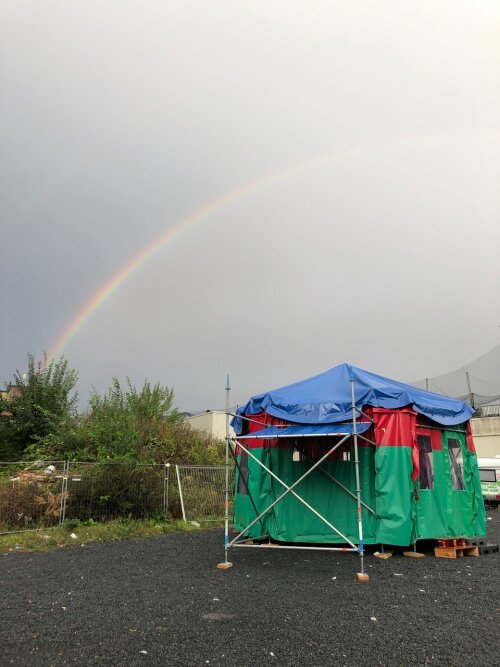
Abstract
This artistic doctoral project- ‘bodies of knowledge- how to claim public space as a platform for the exchange of non-dominant or suppressed knowledge’(2018-2022) - includes the research on embodied knowledge by non-dominant voices, as well as the performative action of claiming public space for the exchange of that knowledge. Initial research questions were: How can public space be activated, via artistic intervention, for the transmission of non-dominant knowledge? How to create a ‘safe space’ within public space for the exchange of different forms of suppressed knowledge, between diverse members of civil society? What are artistic and political strategies to reverse existing knowledge/power relations within the public domain? Which forms of performative knowledge transmission can contribute to a more just, equal, emancipated civil society?
The artist understands education as art and knowledge transmission as a performative act. Drawing upon methodologies developed in previous works, she formalizes and ritualizes a place for oral knowledge exchange, together with different collaborators and co-creators, within different frames and formats.
Composing with Piezo - Daniela Fantechi (1/07/2022)
Daniela Fantechi
- 1 juli 2022, Orpheus Instituut, Gent
- 14:00 Artistieke presentatie
- 15:00 Doctoraatsverdediging
- 14:00 Artistieke presentatie
- Promotoren: Wim Henderickx (Koninklijk Conservatorium Antwerpen), Erik Myin (Universiteit Antwerpen)
Abstract
The thesis Composing with piezo concerns Daniela Fantechi's research project about the composition of instrumental music implemented with a specific use of piezoelectric microphones - low cost and low fidelity contact microphones. During her research, Daniela explored a peculiar use of this technology not only to disclose and amplify the instrumental sound but also to produce unusual sounds, through a reinterpretation of some instrumental gestures, such as glissando, tapping, scraping, etc, produced by playing with the microphone directly on the instrument. The introduction of piezoelectric microphones in her compositional work changed the relationships with the instrumental sound matter, bringing to question different aspects of the compositional approach. The whole research process has consequently been supported by the search for frameworks, theories, and examples, to understand and bring focus to the evolving compositional practice.
The thesis starts by investigating the history of the contact microphone and the way it has become a cultural object, considering diverse artistic experiences in the time window from the '60s to the '80s, when contact microphones began to be a widespread technology. From then on, the use of contact microphones has become common in a huge and diverse range of artistic experiences, most of them related to sound art and experimental music. The second chapter addresses what kind of changes and interferences the introduction of piezoelectric microphones brings into the instrumental sound system, by observing the kind of impact the use of piezoelectric microphones on acoustic instruments has on the listening experience, here defined as a "stethoscopic form of listening". The role of the piezo within the instrumental system is then addressed from an ecological perspective, taking into account the complexity of the feedback network between the instrument and the performer, the alteration of the usual perceptual habits, and the possibility of building new instrumental systems. The third chapter highlights some relevant concepts that have emerged from the practice and have become operational within the development of the research. The fourth chapter is dedicated to the main artistic outputs of the research. For each work, the technical setup, the context for which the piece has been written, and the compositional practice are explained.
The Artist Job Description, a Practice Led Research for the Employment of the Artist, as an Artist, Inside the Art Institution - Vijai Maia Patchineelam (08/06/2022)
Vijai Maia Patchineelam
- 8 juni 2022, 13u00, Koninklijke Academie voor Schone Kunsten Antwerpen, Wintertuin. De verdediging kan live bijgewoond worden of gevolgd via livestream.
- Promotoren: Nico Dockx (Koninklijke Academie voor Schone Kunsten Antwerpen), Paolo S.H. Favero (Universiteit Antwerpen)
Abstract
The artist’s experience of being inside art institutions, starting from the effort made to be accepted in order to develop one’s art practice, then the experience of going through them, and while in them, the many ways of having to learn how to be inside. This will in several ways inform the development of an artist’s practice, for the good or for the bad. Developing the doctoral research, The Artist Job Description has been an attempt at recognizing and dealing with, rather than avoiding, the tensions that exist in the relationship between artists and art institutions at a time when most art institutions themselves are under the pressure of austerity-politics.
The Creative Performer and Giacinto Scelsi: Building a Creative Performance Practice in Dialogue with Giacinto Scelsi’s Artefacts - Marco Fusi (13/05/2022)
Marco Fusi
- 13 mei 2022, De Singel Antwerpen, Witte Zaal. Om de verdediging bij te wonen, gelieve een mail te sturen naar marco.fusi@ap.be
- 14:00 - 14:30 ARTISTIC PRESENTATION - Marco Fusi performing Xnoybis, Divertimento n.4 and Cadenza by Giacinto Scelsi
- 14:30 - 16:30 Doctoraatsverdediging
- Promotoren: Ine Vanoeveren (Koninklijk Conservatorium Antwerpen), Marlies De Munck, Arthur Cools (Universiteit Antwerpen)
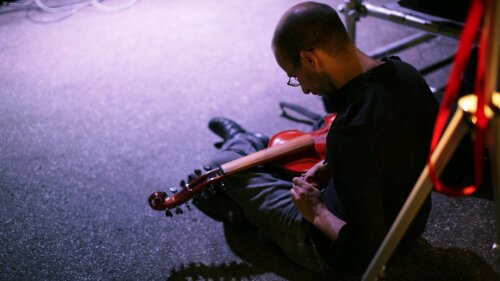
Abstract
Direct contact with Giacinto Scelsi has been the only acknowledged approach to the interpretation of his music, hence forming a circle of elite-performers, recipients of an understanding “beyond the written score”. However, in order to preserve the accuracy and faithfulness of performance, it is essential today to investigate the complex creative process of Scelsi, looking for interpretative suggestions residing within his artefacts. This research has led to discovering the importance of the performer’s creative participation in the process of conceiving, notating and delivering Scelsi’s creative output. To approach the performance of Scelsi’s opus the creative performer needs to devise performative approaches specific to each work, based on their individual experience and personal creative interaction with the materials of performance.
(Photo by Veera Vehkasalo)
Sonic Silhouettes Musical Movement - Investigating the Musical-Gestural Perspective - Winnie Huang (04/04/2022)
Winnie Huang
- 4 april 2022, De Singel Antwerpen, Gele zaal. Om de verdediging bij te wonen, gelieve een mail te sturen naar winnie.huang@ap.be
- 10:30 - 11:30 Concert performance
- 11:40 - 12:20 Lecture presentation
- 12:30 - 13:30 Doctoraatsverdediging
- Promotoren: Ine Vanoeveren (Koninklijk Conservatorium Antwerpen) en Peter Reynaert (Universiteit Antwerpen)
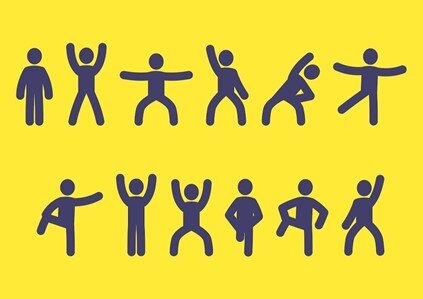
Abstract
In the contemporary music world of the performing arts, an increasing number of musical-gestural works are being composed and performed. The rise of these pieces, the curiosity in creating them by composers, and the growing demand for these types of performers necessitate investigation from an artistic researcher’s perspective, in the hope of providing insight and agency for future creators, artists, and academics in this field. Through a methodical investigation on various case studies, different in the degree of composer/performer collaboration, Sonic Silhouettes Musical Movement questions the identity and role of the musical-gestural artistic researcher at all the varying degrees of participation during the process of collaboration, composition and performance.
This research aims to examine how musical-gestural pieces are learned and performed through an exploration on the various skill sets, performance practice methods, notational issues, and the physical states a performer adopts, and effectively provide additional knowledge towards an evolving group of artists and the spectrum of creatives around and within.
Finally, this research hopes to explore how the performer inhabits the artistic body in the creation/composition process and during the performance, the presentness; understanding the artistic body’s physical presence, self-awareness, and sensorial interactions while in rehearsal/performance, since dramatic movements seemingly provide some of the strongest contributors for human expression, intention, and focus. Through proactive embodied research, the emergence of new pathways, and the collaborative and transmissive experiences, this critical reflection showcases the expanding nature and collective knowledge gained from the musical-gestural perspective for all participants.
The (Bureau)creative Age - Een parafictie over de nasleep van de creatieve industrie - Sarah Hendrickx (18/03/2022)
Sarah Hendrickx
- 18 maart 2022 - M HKA - Gelieve je aanwezigheid te bevestigen via sarah.hendrickx@kdg.be
- 13.30 - 14:30 Vertoning documentaire meandmywork and the (Bureau)Creative Age - Auditorium, 3de verdieping
- 14:30 - 15:00 Bezoek tentoonstelling, 5de verdieping
- 15:00 - 17:00 Doctoraatsverdediging - Auditorium, 3de verdieping
- 13.30 - 14:30 Vertoning documentaire meandmywork and the (Bureau)Creative Age - Auditorium, 3de verdieping
- Promotoren: Wesley Meuris (Sint Lucas Antwerpen), Pascal Gielen (Universiteit Antwerpen)
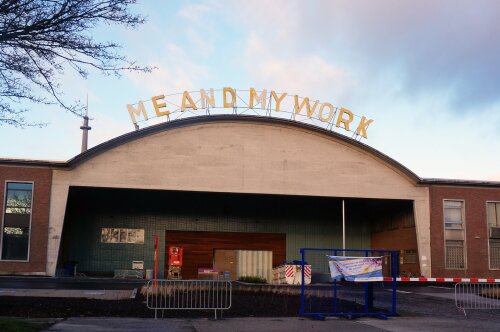
Abstract
De parafictionele documentaire meandmywork and the (Bureau)Creative Age en de bijbehorende tentoonstelling in het M HKA in Antwerpen (24/02/2022 – 20/03/2022), zijn het resultaat van het doctoraatsonderzoek in de kunsten van Sarah Hendrickx aan Sint Lucas Antwerpen en de Universiteit Antwerpen. The Bureaucreative Age is een onderzoek vervlochten in een economische, bureaucratische en bedrijfsmatige omgeving, gegoten in een artistieke parafictie.De kunstenaar speelt daarbij met de overlapping van feit en fictie via de verbeelding van het Research Centre on Creative Abilities meandmywork.
Het verhaal waarin meandmywork werd opgezet als een fictief karakter over-identificeert zichzelf met de bureaucratische bedrijfsprocessen ervaren in de wereld van corporate creativity. De kunstenaar opent de deur voor speculatie waardoor het onderzoek een artistieke daad wordt van toekomstprojectie of futuring: een proces dat nadenkt over de toekomst, zich voorstelt wat er kan gebeuren en inzicht geeft in acties die in het heden genomen kunnen worden.
Verschillende lagen werden minitueus opgebouwd om te werken aan de truthiness van het verhaal. Tegelijkertijd schemert de fictieve constructie door in de aanpassing van woorden, zinnen, beelden en keuzes in de montage. Echte interviews brengen nieuwe reflecties en opinies met zich mee en versterken de geloofwaardigheid van de documentaire.
Een ander deel van het onderzoek verschijnt op het toneel via de tentoonstelling waarin zogenaamde artefacten te zien zijn die dateren uit het tijdperk van het onderzoekscentrum meandmywork en The Bureaucreative Age, wat de toeschouwer aanmoedigt om nog verder mee te stappen in deze fictie.
De parafictie The Bureaucreative Age met het Research Centre on Creative Abilities meandmywork in de hoofdrol, bouwen zo hun betekenis op door de ontmoeting met de kijker, waarbij ze een veelvormigheid creëren en tegelijkertijd een fatalistische visie introduceren over wat er zou kunnen gebeuren als kunst en creativiteit worden opgeslorpt door de ondernemingsmacht van grote bedrijven.
MoE 2.0 - Van verbeeldend onderzoek tot artistiek product in kunsteducatie - Bob Selderslaghs (04/03/2022)
Bob Selderslaghs
- 4 maart 2022 - De Singel Antwerpen
- 15:00 - 15:30 - De Experten IV - Toonmoment - Muziekstudio - TICKETS
- 15:30 - Tentoonstelling - hal Witte Zaal en Witte Foyer
- 16:30 - 18:30 - Doctoraatsverdediging - Om de verdediging bij te wonen, stuur een e-mail naar bob.selderslaghs@ap.be.
- Promotoren: Annouk Van Moorsel (Koninklijk Conservatorium Antwerpen) en Kurt Vanhoutte (Universiteit Antwerpen)
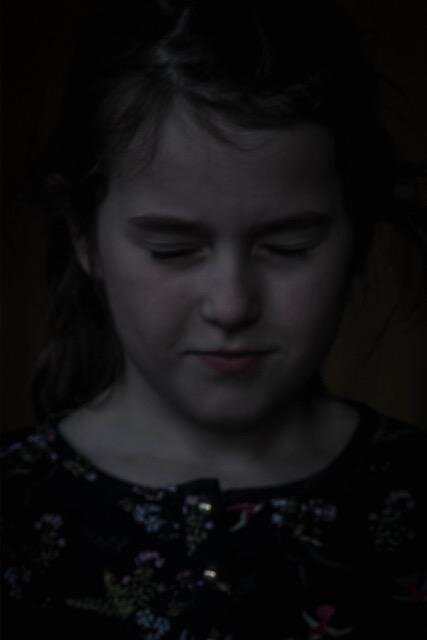
photo by Barbara Vandendriessche
Abstract
Er is weinig onderzoek gedaan naar hoe je een gezonde balans kunt creëren tussen proces en product in kunsteducatie. Nochtans erkennen onderzoekers, kunstenaars, leraren, lerarenopleiders, leerlingen en publiek de noodzaak van dat evenwicht: zonder een kwaliteitsvol proces bereik je onmogelijk een hoogwaardig product. En een product met een laag of bedenkelijk niveau zullen toeschouwers in het beste geval met de mantel der liefde bedekken als ze een emotionele band hebben met de kunstenaar(s) of als ze weten dat er wel een waardevol (sociaal) proces aan het product voorafging. Het doctoraatsonderzoek MoE 2.0 exploreert hoe de dramatische onderzoeksbenadering van leren en onderwijzen Mantle of the Expert, een vorm van procesdrama, verrijkt kan worden tot een methodiek in kunsteducatie om non-scripted theaterperformances te creëren met jonge doelgroepen en aldus een evenwicht kan creëren tussen het artistieke proces en product.
Redefining the Conductor’s Role in New Music Ensembles - Thomas R. Moore (19/02/2022)
Thomas R. Moore
- 19 februari 2022 - De Singel Antwerpen
- 10:00 - 13:00 Doctoraatsverdediging - Witte zaal - om de verdediging bij te wonen, stuur een e-mail naar thomas.moore@ap.be.
- 21:00 - 22:00 Concert 'Hand On (Hands Off)' - Musical performance by Nadar Ensemble, conducted by Thomas R. Moore - Blauwe zaal - TICKETS
- Promotoren: Koen Kessels (Koninklijk Conservatorium Antwerpen) en Pascal Gielen (Universiteit Antwerpen)
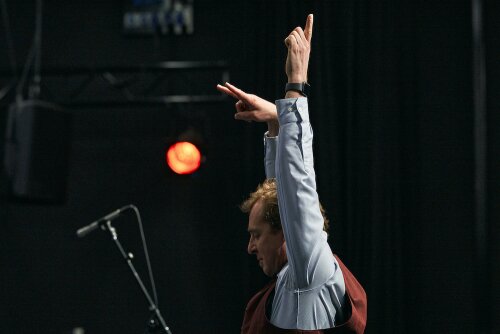
Abstract
Over the last seven decades, the role of the conductor has evolved in new music ensembles that perform integrated concerts. It was problematized by John Cage; doubled (or split) by Charles Ives, Karlheinz Stockhausen, and Mark Applebaum; manipulated by Thierry De Mey, Simon Steen-Andersen, and Stefan Prins; instrumentalized by Alexander Schubert, Alexander Khubeev, Michael Maierhof, and Pieter Matthynssens; and deployed tactically by Serge Verstockt, Jessie Marino, and Carl Rosman. For these composers and artistic directors and others in their genre, the presence of the conductor is no secondary phenomenon of the music, by an affirmative and active choice to deploy one to meet specific artistic and/or socioeconomic needs. The systematic study of this relatively new and developing situation allowed me to find tools and methods for forming the required piece-specific performance practices with the aim of better functioning as a tactical and curated conductor.
→ Link naar de doctoraatsthesis van Thomas R. Moore
Close Encounters. Developing a Method for the Creation of Dialogue through Photography - Liza Van der Stock (28/09/2021)
Doctoraatsverdediging Liza Van der Stock
- 28 september 2021, 11u - online verdediging - stuur een bericht naar liza.vanderstock@student.uantwerpen.be als u de verdediging wilt bijwonen.
- Promotoren: Paolo S.H. Favero (Universiteit Antwerpen) en Kristof Timmerman (Koninklijke Academie voor Schone Kunsten Antwerpen)
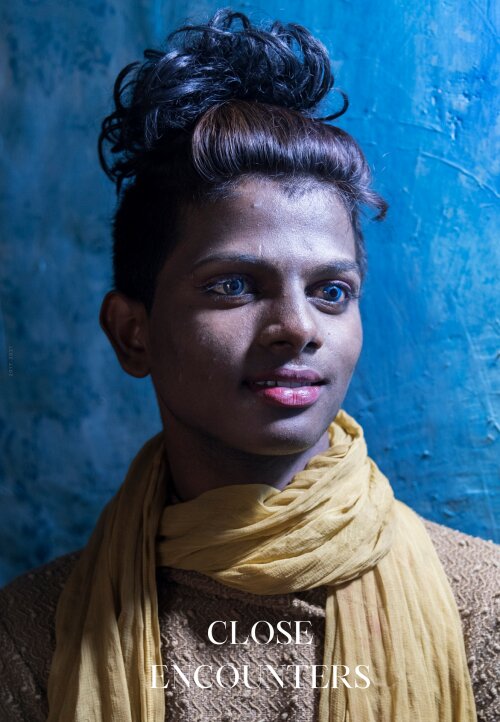
Abstract
Mijn doctoraat in de kunsten focust op de vraag hoe fotografie op een visuele wijze een dialoog kan kan helpen creëren tussen gemeenschappen en individuen die conventioneel geen of nauwelijks contact met mekaar hebben. Dit komt door diepgewortelde vooroordelen en discriminatie.
Het grootste gedeelte van mijn onderzoekstijd heb ik doorgebracht bij leden uit verschillende transgender gemeenschappen in Mumbai (India). De zogenaamde "hijras" (in het Hindi is dat een vaak denigrerend bedoelde term die wordt gebruikt om eunuchen, interseksuelen en transgenders aan te duiden) zijn in India voorwerp van tegelijk verering en afkeer, van aantrekking en afstoting.
Mijn fotografisch werk waarop dit doctoraat steunt, is een combinatie van documentaire technieken en creatieve participatieve praktijken. De kern van mijn onderzoek biedt inzicht in het leven van transgender vrouwen die weliswaar vaak het voorwerp van media-aandacht zijn, maar zelden of nooit deelnemen aan intieme interactie en wederzijdse dialoog. Het fotografisch materiaal dat de kern van mijn werk vormt, biedt zowel speelse als ernstige momentopnames voor de camera en vat een glimp van zgn. “banale” momenten uit het dagelijks leven van individuen die een paradoxale plaats innemen in hun samenleving.
Mijn creatieve participatieve praxis bestond uit een combinatie van workshops en tentoonstellingen. Het doel van de workshops was om de technieken die ik zelf gebruikte om een verstandhouding te creëren met de mensen die ik fotografeerde, te vertalen naar collaboratieve workshops tussen studenten en transgenders uit dezelfde gemeenschap. Het ging telkens om mensen die dicht bij elkaar wonen, maar zonder enige vorm van contact. Tijdens de workshops decoreerden en bespraken de deelnemers de voorgelegde foto's. Die toonden de transgenders in dagelijkse situaties met vrienden en familie, tijdens het vieren van festivals of tijdens het uitgaan. Hierdoor lag de focus meteen op situaties en ervaringen die ze gemeen hadden. Door de visuele en mondelinge commentaren op de foto's ontstonden er interessante discussies.
Het meest waardevolle inzicht dat ik tijdens mijn onderzoek heb gekregen, is het besef dat fotografie een krachtig instrument is om mensen bij elkaar te brengen. De voorbije drie jaar heb ik deze kracht leren kennen en gebruiken. In de toekomst zal ik deze ervaringen verder uitwerken.
Per Forza di Levare - Athar Jaber (29/06/2021)
Athar Jaber
- 29 juni 2021 - online verdediging - stuur een bericht naar research@atharjaber.com als u de verdediging wilt bijwonen.
- Promotoren: Gert Verschraegen (Universiteit Antwerpen) en Ria De Boodt (Koninklijke Academie voor Schone Kunsten Antwerpen)
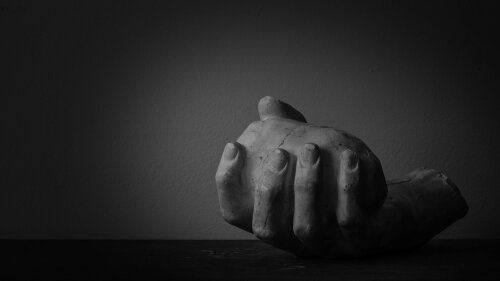
Abstract
Het beoefenen van de beeldhouwkunst, en van steenhouwen in het bijzonder, is op vele niveaus gerelateerd aan geweld.
Ten eerste is er het evidente, zichtbare geweld van het houwen in steen. Ten tweede spelen sculpturen en monumenten een representatieve rol in dienst van autoriteiten die regeren door middel van een beleid van systemisch geweld. En ten derde heeft steen, het materiaal waarin vele sculpturen zijn gemaakt, een symbolische waarde die kan worden geassocieerd met onderdrukkende strategieën van structureel geweld.
In dit praktijkgerichte doctoraatsonderzoek in de kunsten, combineert Athar Jaber kritisch denken over het onderwerp geweld met zijn sculpturale praktijk. Hij werkt bovengenoemde aspecten uit met de bedoeling om dringende sociaal-politieke problemen aan te pakken die onze hedendaagse samenleving en de menselijke conditie in het algemeen teisteren.
Bovendien wil het onderzoek de aandacht vestigen op de latente semiotische kracht van steen bedoeld om een bewuster gebruik ervan te stimuleren in de hedendaagse kunstpraktijk.
Endlich etwas wirklich neues - Levente Kende (13/06/2021)
Levente Kende
- 13 juni 2021 - De Singel Antwerpen - Blauwe zaal - registratie verplicht
- 15:30 - 18:00 Liszt - Bartók concert
- 18:00 - 19:30 Doctoraatsverdediging
- Promotoren: Stephan Weytjens (Koninklijk Conservatorium Antwerpen) en Henk de Smaele (Universiteit Antwerpen)
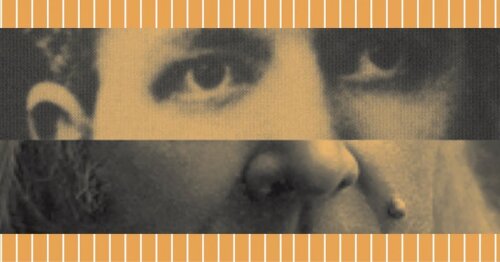
Endlich etwas wirklich neues… (Ferruccio Busoni over Béla Bartóks 14 Bagatellen / 1908) versus Darf man solch ein Ding schreiben oder anhören? (Ferenc Liszt over zijn Csárdás macabre / 1882)
Vergelijkend onderzoek van (r)evolutionaire vernieuwingen in de late pianowerken (1860-1886) van Ferenc Liszt en de vroege pianowerken (1908-1912) van Béla Bartók door Levente Kende
Hoewel Liszt van meet af aan 'provocatieve' programmamuziek met modernistische elementen componeerde - zoals Les Morts, Harmonies poétiques et religieuses, Sonate, Faust-Symphonie - is het bijzonder opmerkelijk dat hij na 1860 plotseling pianostukken - zoals Trois Odes funèbres: Les Morts - La Notte - Le triomphe funèbre de Tasso, Années de Pèlerinage III, Nuages gris, Mosonyi's Grabgeleit – componeert, stukken die volledig en opmerkelijk afwijken van zijn gebruikelijke compositiestijl. Deze werken vertonen een stilistische mengeling van laat-romantische, impressionistische en expressionistische elementen. Rond 1860 brak een tijdperk aan waarin 'dood en dans' een regelmatig terugkerend thema was in Liszts werken: zijn doodsgedichten geschreven in 'een compositiekoorts'. Deze late stukken (1860-1886) zijn expressionistisch, deels a-tonaal, en werden alleen door Liszt en zijn leerlingen gespeeld. Het hoogtepunt kwam in 1881-1882 met 'Csárdás macabre', de meest opmerkelijke van de zeer gedurfde reeks composities, waarin hij zich steeds meer op chromatische dissonanten stortte; een stuk met langdurige, dreunende en angstaanjagende lege kwinten, chromatisch bewegend tussen 'mogelijke en onmogelijke toonsoorten'. Liszt gebruikte een laconieke vraag als ondertitel: "Darf man solch ein Ding schreiben oder hören?".
Als stilistische voorloper van Bartók en van de 20ste-eeuwse muziek is Liszts Csárdás macabre een volwaardige compositie die evolueert van laat-romantiek naar een polytonaal pre-expressionisme en die de weg opent naar het atonale expressionisme van Bartóks 14 Bagatellen. In Liszts oeuvre, en in de algemene stilistische evolutie van de 19e eeuw, getuigt dit meesterwerk voor piano van een even baanbrekende inventiviteit als 26 jaar later Bartóks 14 Bagatellen. Tussen 1908-1912 componeerde Bartók een indrukwekkende reeks pianowerken waaronder de 14 Bagatellen en Allegro barbaro. Met de 14 Bagatellen is voor de piano een nieuw tijdperk en een nieuwe "moderne" stijl aangebroken. - Hierover gaat de beroemde uitspraak van Busoni: "Endlich etwas wirklich neues". Bartók schreef: "De Bagatellen openen een nieuwe klavierstijl in mijn carrière als componist, die de meeste van mijn latere pianowerken - met kleinere of grotere aanpassingen - consequent volgen". Tijdens deze studie wordt ook nagegaan in hoeverre Liszts late werken niet alleen een (r)evolutionaire breuk vormen met de hoogromantiek, maar ook een avant-gardistische basis vormen voor Bartóks stijl en compositietechniek, en bij uitbreiding voor 20ste-eeuwse componisten als Debussy, Reger, Busoni, Schönberg, Prokofjev, Rachmaninov, Messiaen, Kurtág en anderen, waardoor de expansie van tonaal-functionele muziek en ook nieuwe muzikale vormen konden ontstaan. De nadruk ligt op de vergelijking Liszt-Bartók: wat leidde er uiteindelijk toe dat beide componisten op een vergelijkbare manier deze breuk met de vroegmoderne tijd vanuit hun beide laatromantische, eclectische idioom realiseerden.
Een diepgaander onderzoek analyseert welke leidende passies en mentale factoren Liszt in 1860 en Bartók in 1908 inspireerden en hoe dit tot uiting komt in hun respectieve composities. Dit onderzoek tracht een antwoord te vinden op de vraag waarom Liszt vanaf 1860 en Bartók vanaf 1908 wezenlijk afwijken van hun daarvoor gebruikte compositietechnieken en een "avant-garde" (r)evolutie realiseren in Europa en in de Hongaarse muziek, zowel op stilistisch als compositorisch gebied. Essentiële citaten komen voornamelijk uit de persoonlijke brieven van Liszt en Bartók in een dagboekachtige chronologische vorm. Maar ook uit authentieke en historische documenten, eerste drukken, perscommentaren in historische tijdschriften. Zo wordt duidelijker hoe bijzondere levensomstandigheden en essentiële gebeurtenissen hun gedachten en gevoelswereld hebben beïnvloed en daardoor ook hun muzikale stilistische evolutie, hun compositietechnieken. Op deze wijze worden Liszts late en Bartóks vroege composities gesitueerd, juist gedateerd, inspiratiemodellen onderzocht, in historische context geplaatst met als uiteindelijk doel de vraag te beantwoorden "welke late Liszt-composities waren Bartók bekend en hebben hem (wezenlijk) beïnvloed".
Bartóks samenwerking met Breitkopf & Härtel (1911-1913) voor de uitgave van Liszts Complete Werken - Bartóks inleiding tot Liszts Hongaars gerelateerde composities - wordt uitvoerig besproken. Speciale aandacht wordt besteed aan Bartóks herziening van Liszts Csárdás macabre. De gissingen naar de juiste datum van het componeren van Bartóks meest iconische werk, Allegro barbaro, zijn nu beter gesitueerd, zodat dit werk nu een correcte herdatering krijgt. Dit is gebaseerd op een uiterst complete chronologie van zijn werk in 1910-19013. Het is ook zeer waarschijnlijk dat Liszts Csárdás macabre model heeft gestaan voor Bartóks Allegro Barbaro
Door de geldende corona-maatregelen zijn de plaatsen beperkt en is registratie verplicht.Reserveer hier uw plaats.
Freedom Is Not Free - Mashid Mohadjerin (20/05/2021)
Mashid Mohadjerin
- 20 mei 2021 - 15:00: publieke verdediging online. Stuur een bericht naar mashid.fotografia@gmail.com voor de link.
- Promotoren: Roschanack Shaery-Yazdi (UAntwerpen), Johan Pas (Koninklijke Academie voor Schone Kunsten Antwerpen)
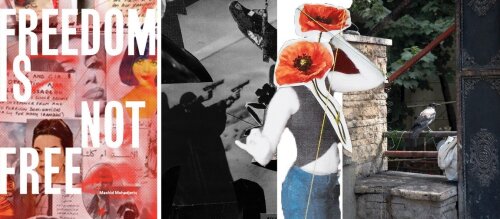
Abstract
Zowel in het heden als in het verleden zijn vrouwen van essentieel belang bij het initiëren, continueren en bereiken van politieke ommekeer. De inspiratie voor mijn project vloeide voort uit de massale aanwezigheid van vrouwen tijdens de Arabische opstanden na 2011 en de beelden die hiervan verschenen in de media. Het mondde uit in een zoektocht naar mijn persoonlijk verhaal van de revolutie in mijn geboorteland Iran.
Beelden dragen een grote verantwoordelijk voor hoe we ‘de ander’ zien en ervaren. Mijn doel is het bevragen van bestaande stereotyperingen rond moslimvrouwen en hun rol tijdens revoluties, evenwel zonder het spektakel van de opstanden in beeld te brengen. Enscenering en beeldmanipulatie laat ik hierbij achterwege.
Bewust van de bestaande conventies omtrent documentaire- en portretfotografie tracht ik via foto’s en intieme gesprekken de strijd en de omgeving van iconische activisten te verbeelden. Aan de hand van collages die ik maakte op basis van archiefbeelden en teksten wordt hieraan ook een historisch luik toegevoegd. De gesprekken met activisten en de kritische reflecties hierop, beïnvloeden mijn selecties en sequenties en brengen een complexer en genuanceerder beeld tot stand. Het uiteindelijke resultaat is een persoonlijk multidimensionale verslag dat het journalistieke en het artistieke met elkaar verweeft.
Exit Strategies and a Stand Alone Complex - Peter Lemmens (28/04/2021)
Peter Lemmens
- 28 april 2021
- 14:00: screening van de film 'Reverse Engineering'. Live stream via https://youtu.be/uMoVDjBasns
- 16:00: publieke verdediging online. Stuur een bericht naar peterlemmenspeter@gmail.com voor de link.
- Promotoren: Pascal Gielen (UAntwerpen), Johan Pas (Koninklijke Academie voor Schone Kunsten Antwerpen)
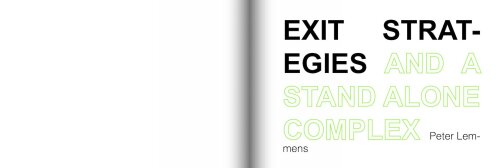
Abstract
Dit onderzoek tracht de moeilijk grijpbare aspecten van artistieke productie en distributie te begrijpen als kritische en esthetische momenten. Via Fan Fictie als een veld dat steunt op zelf-organisatie, kijk ik naar organisatorische elementen van een kunstwerk voor hun sociale, economische, politieke en artistieke capaciteiten. Op dit snijvlak bevraag ik hoe zichzelf als kunstenaar te organiseren met oneigenlijke methodes en een indirecte aanpak. Om indirect betrokken te zijn zoals in Fan Fictie, om naast iets anders geëngageerd te zijn, is een ingang verhuld als een uitgang. Mijn kunstwerken wijzen niet alleen naar wat anders moet, maar naar wat tegelijkertijd kan. Op deze manier probeer ik te ontsnappen aan binair denken en uit te gaan van het ambigue, het samenvallen en het paradoxale. Ik gebruik een strategie van gelijktijdigheid die zoekt naar kleine afleidingstactieken als permanente, fragiele vormen van productie en distributie. Dit onderzoek zoekt zijn noodzakelijkheid, niet in het afbeelden van lineair probleem-oplossen in een werk, maar creëert disruptieve momenten van paradoxaal denken voorbij het werk. Op deze manier, beschrijf ik indirecte narratieven van engagement. Door de lens van distributie breid ik de vraag van “wat te maken” uit met “hoe iets te maken”.
De digitale publicatie ‘exit strategies and a stand alone complex’ kan integraal gedownload worden op http://diversions.be/downloads/book.html
Parallel narratives - different elements and forms of representations and their influence on the audiences’ perception - Ali Moayed Baharlou (19/02/2021)
Ali Moayed Baharlou
- 19 februari 2021 - 17u
- Online verdediging
- Promotoren: Dr. Philippe Meers (UAntwerpen), Dr. Tom De Smedt (Sint Lucas Antwerpen)
Abstract
Parallel narratives, different elements and forms of representations and their influence on the audiences’ perception researches parallel narratives in film and how choice can lead to different destinies for the protagonist. The questions raised are how the audiences perceive these topics in parallel narratives and how filmmakers can change or manipulate the perception of choices, multiple paths and free will by diverse narrative elements, devices and different forms of representations.
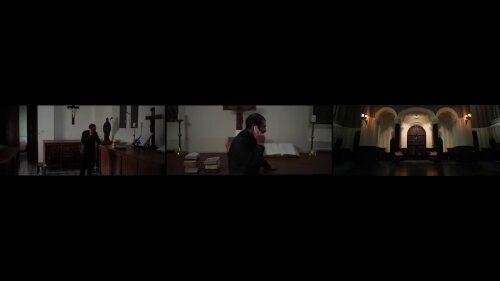
A Case of Recorders: Recorder Use in Spanish Churches and Cathedrals in the Sixteenth and Early Seventeenth Centuries - Julia Miller (14/10/2020)
Julia Miller
- 14 oktober 2020
- Promotoren: Dr. Bruno Blondé (UAntwerpen), Dr. Eugeen Schreurs (Royal Conservatoire Antwerp) en Dr. David Burn (KU Leuven)
Abstract
This PhD project researches the use of recorders in performing sacred music in Spanish cathedrals and churches during the sixteenth and early seventeenth centuries. As well, it examines the interaction of the historical findings with artistic questions arising in twenty-first-century performance of this sacred music repertoire.
When today's musicians seek to perform sacred Renaissance works in an historically informed manner, they are confronted with an array of questions arising from original music sources which did not generally specify the use of instruments or the manner of arranging the music for performance. Paradoxically, while numerous sets of recorders were purchased by ecclesiastic institutions during the period studied, most contemporary sacred music did not specifically call for their use. As well, surviving sixteenth- and early seventeenth-century documentation is highly fragmentary regarding the participatory role of recorders in sacred repertoire of this period.
At the same time, scholarly research and writing had not addressed this issue. Sacred music of this era offers the modern musician a large and rich potential repertoire of supreme quality and beauty. Therefore, in seeking an historically informed basis for performance, this doctoral project asks if recorders were used in such works in Spanish ecclesiastic institutions during the sixteenth and early seventeenth centuries, and, if so, how.
'Digital Nature for healthcare': Onderzoek naar beeldende kunst en gezondheidszorg om stress bij kinderen te verminderen - Ludivine Lechat (19/06/2020)
Ludivine Lechat
- 19 juni 2020
- Promotoren: Koen Norga, Monica Dhar (UAntwerpen) en Tom De Smedt (Sint Lucas Antwerpen)
Abstract
Dit doctoraat beoogt het promoten van onderzoek naar beeldtaal voor positieve artistieke interventies in de zorgsector, om de levenskwaliteit van jonge patiënten te verbeteren.
In overleg met kinderen, verplegend personeel en opvoeders gaat Ludivine Lechat op zoek naar visuele voorkeuren en narratieve concepten die het mentale welzijn van kinderen zou kunnen bevorderen. Dit om inzichten te verwerven voor het ontwerpen van ontspannende illustraties voor nieuwe media applicaties.
Het gehele onderzoeksproces heeft bijgedragen aan de ontwikkeling van creatieve product prototypes dat gericht zijn op stressverlagende toepassingen binnen de zorgsector.
“Digital Nature for healthcare” is een poging om via beeldende kunsten op een zinvolle manier bij te dragen aan een sector die ons uiteindelijk allemaal aanbelangt: gezondheidssector
Making Waves. A Play with Arts and Crafts - Wim Wauman (20/12/2019)
Wim Wauman
- 20 december 2019
- Promotoren: Gert Verschraegen en Ria De Boodt
Abstract
Het onderzoeksproject ‘Making Waves. A Play with Arts and Crafts’ van Wim Wauman laat zich best omschrijven als een sequentie van ‘golven’ die werden opgewekt om het dynamische bereik van zijn artistieke praktijk uit te breiden, nieuwe paden te verkennen en inzichten te verwerven of te delen. Wat zich aankondigde als een artistiek onderzoek naar de relevantie van ‘vakmanschap’ en de schijnbare tegenstelling tussen ‘maken’ en ‘denken’, monde uit in een persoonlijke en metaforische queeste, en in een ‘thesis’ die bestaat uit drie componenten.
Het onderzoek begon in januari 2016 met een praktijkgerichte verkenning van ‘vakmanschap’ door in de leer te gaan bij een ‘meester’ met als doel om technieken aan te leren betreffende het gebruik (snijden, monteren,…) van houtfineer. Dit leertraject mag beschouwd worden als de eerste ‘golf’ waaruit de verschillende kunstwerken, artistieke
artefacten en projecten zijn ontstaan, die samen het proefschrift vormen.
In de Reader’s Guide, het eerste document van de thesis, wordt een chronologisch overzicht geschetst van de voornaamste onderzoeksactiviteiten met een klemtoon op de persoonlijke motivatie die als stuwende kracht het afgelegde traject in ruime mate heeft bepaald. In deze introductie worden de bruggen besproken die van de ‘tegenstelling’, langs ‘de strijd’, tot de ‘samenwerking’ hebben geleid.
Geïnspireerd door een literatuurstudie rond ‘vakmanschap’ volgde in 2018 het WORK FLOW -project: Een tentoonstelling (Cultuurcentrum, Sint-Niklaas) en publicatie met werk van 50
(internationale) kunstenaars die onderling, als ingrediënten van een groots stilleven, met elkaar in dialoog werden geplaatst. De fraai vormgegeven publicatie – de tweede component
van de ‘thesis’ – omvat twee delen: een simulatie van de tentoonstelling als een (te ontvouwen) sequentie van genummerd beeldmateriaal, én een uitgekiend patchwork van
citaten, referenties en associaties gebundeld in een Engelstalige reader onderverdeeld in vijftien hoofdstukken: A Play with Arts (Apes) and Crafts.
De toewijding voor dit ambitieus project werd echter overschaduwd door een confronterend familiaal drama met tragische afloop. De pijnlijke naweeën van deze tweede golf, brachten
een derde golf teweeg: een pelgrimstocht naar de bron van de sirene uit het gemeentelijk wapen van Waasmunster. Dit improvisatiespel werd op touw gezet in en rond een tijdelijke
toevluchtsoord, ingericht als gedeelde kunstenaarsresidentie: het Blauwhaus. In het Blauwhaus Getijdenboek/Book of Tides – de derde en laatste component – wordt met
gevleugelde woorden en vele illustraties verslag uitgebracht over ‘A Play with Arts and Crafts’. Een ernstig spel met vorm en inhoud, talrijke metaforen en mystieke symboliek,
geschreven en ‘vakkundig’ verweven uit hart en ziel.
De hiel van Kuifje - Lucas Vandervost (08/12/2019)
Lucas Vandervost
- 8 december 2019
- Promotoren: Kurt Vanhoutte en Bert Danckaert
Abstract
In zijn doctoraatsonderzoek De hiel van Kuifje heeft Lucas Vandervost de principes en strategieën onderzocht die tekst in ‘zegging met dramatische spanning’ omzet. Dit vanuit het standpunt van de acteur, los van de dramatische spanning die eigen is aan een verhaalstructuur. In weerwil van de opvatting dat spanning een ongrijpbaar fenomeen is dat alleen in geïnspireerde, artistieke vrijheid ontstaat heeft hij een poging gedaan de condities en wetmatigheden ervan omschrijven. Naar analogie met de exacte wetenschap, waar spanning wordt vertaald in druk die zich laat lezen in de verhouding tussen kracht en oppervlakte, heeft hij objectieve eenheden en formules in kaart gebracht die een acteur kan gebruiken om met de toepassing ervan in zijn zegging dramatische spanning te genereren.
De titel van het onderzoeksproject, De hiel van Kuifje, is een knipoog naar de meester in spanningsopbouw, Hergé. Hij tekent vaak de hiel van een wegrennende Kuifje in de rechterbenedenhoek van een kader, waardoor de focus op de reactie van de achterblijver ligt terwijl de eigenlijke actie zich buiten het kader afspeelt. Op die manier is Kuifje iedereen te snel af en laat hij niet alleen zijn medespelers maar ook zijn publiek ‘in spanning’ achter.
Met een concert, boekvoorstelling, theatervoorstelling en salon met doctoraatsverdediging beëindigt Vandervost zijn onderzoek. De kunst van het verdwijnen is de titel van een themadag waarin hij zijn onderzoeksresultaten deelt met zijn publiek. Het vindt plaats op 8 december om 15 uur in De Witte Zaal van het Conservatorium (deSingel) Antwerpen.
De verdediging vindt plaats om 20 uur in dezelfde zaal.
Voorzitster jury: Annick Schramme
Juryleden: Viviane DeMuynck, Stefan Hertmans en Jan Steen
World Without Us - Geert Goiris (09/05/2019)
Geert Goiris
- 9 mei 2019
- Promotoren: Luc Pauwels en Johan Pas
Abstract
World Without Us is a practice based Phd in visual art.
Rather than stemming from a defined hypothesis or research question, it should be understood as a visualization experiment anticipating a world without humans.
These excercises in imagination take shape in three interconnected presentations: two consecutive exhibitions and a publication.
The exhibitions wants to pronounce the perceptional shift caused by current anxieties about the future of our planet.
Fundamental changes in our ecosystem and the rise of artificial intelligences are modifying the world as we know it. The future of humankind will be a very different one. How does this affect our psychological state of mind, our imagined futures and premonitions? In this ‘age of uncertainty’ the individual is overpowered by alarmist, conflicting information. Are we suffering from epochalism, the belief that our current era is unique in human history because it represents a disruptive break with the past? Or are we actually at a tipping point between self-preservation and self-destruction? Some of these images foreshadow what is left when humans have vacated the scene.
Still and moving photographic images are on view: framed prints, monumental wallpaper prints, analogue slide projections and a video installation.
The images are exhibited in a scenography designed in close collaboration with architect Kris Kimpe.
The book accentuates the spatial character of my recent work by presenting a number of installation views of the exhibitions in Antwerp and Bologna. Next to this documentation, a sequence of photographs and an extensive interview with Steven Humblet is presented in the book to further investigate the narrative potential of still images in distinctive spaces and temporalities: the exhibition space, the book space and in time-based media such as video-installations and analogue slide projections.
During this Phd research I continued to develop a practice where fragmentation and different modes of narrativity are activated to evoke a possible, but unwanted future.
World without Us
Exhibition De Lange Zaal - Royal Academy for Fine Arts Antwerpen November 15th – December 20th 2018
Terraforming Fantasies
Exhibition Palazzo De’ Toschi – Bologna January 29th- February 28th 2019
World Without Us, Monographic Publication
Roma Publications, Amsterdam
Release date: May 9th 2019
- Photographs, video installation and analogue slide projection: Geert Goiris
- Interview, text editing: Steven Humblet
- Additional text editing: Robert Enoch
- Exhibition scenography: Kris Kimpe
- Video Editing and colour grading: Xavier Dockx
- Soundscape: Frederik Meulyzer
- Graphic design exhibition leaflet: Bas Rogiers
- Graphic design publication: Roger Willems
Signature Strengths - Boy Vereecken (03/05/2019)
Boy Vereecken
- 3 mei 2019
- Promotoren: Prof. dr. Luc Pauwels en Michel Van Beirendonck
Abstract

Everything starts with an allegorical skit about the ‘1900’ Art Nouveau style;
‘… Loos began his battle with Art Nouveau a decade before “Ornament and Crime.” A pointed attack comes in 1900, in the form of an allegorical skit about “a poor little rich man” who commissions an Art Nouveau designer to put “Art in each and every thing:” Each room formed a symphony of colours, complete in itself. Walls, wall coverings, furniture, and materials were made to harmonise in the most artful ways. Each household item its own specific place and was integrated with the others in the most wonderful combinations. The architect has forgotten nothing, absolutely nothing. Cigar ashtrays, cutlery, light switches – everything, everything was made by him. … This Gesamtkunstwerk does more than combine architecture, art, and craft; it commingles subject and object: “the individuality of the owner was expressed in every ornament, every form, every nail.” For the Art Nouveau designer this is perfection: “You are complete!” he exults to the owner. But the owner is not so sure: this completion “taxed [his] brain.” Rather than a sanctuary from modern stress, his Art Nouveau interior is another expression of it: “ The happy man suddenly felt deeply, deeply unhappy . . . He was precluded from all future living and striving, developing and desiring. He thought, this is what it means to learn to go about life with one’s own corps. Yes indeed. He is finished. He is complete!” … For the Art Nouveau designer this completion reunites art and life, and all signs of death are banished. For Loos, on the other hand, this triumphant overcoming of limits is a catastrophic loss of the same – the loss of the objective constraints required to define any “future living and striving, developing and desiring.” Far from a transcendence of death, this loss of finitude is a death-in life, as figured in the ultimate trope of in distinction, living “with one’s own corpse.”’
Hal Foster, Design and Crime (And Other Diatribes), Radical Thinkers, Verso Books 2002, pp. 13-5.
Boy Vereecken is an Art Director and Editorial Designer based in Brussels. After graduating from LUCA School of Arts in Ghent (M.A.) and the Werkplaats Typografie (M.A.) in Arnhem, he started his practice in Brussels. From 2012 till 2019 he held the position of Art Director at the Kunsthalle Wien, a position that was rewarded with the German Design Award in 2014. Recent projects include the Art Direction for the Tai Kwun Contemporary’s Hong Kong Art Book Fair and the Belgian Pavilion for the Venice Biennial 2019. In 2016 published Signature Strengths and in 2019 Herewith the Clues, both dealing around notions of publishing history.
Jury
Individual PhD Commission (IPC)
- Supervisor prof. dr. Luc Pauwels (Dept. of Communication Studies, University of Antwerp)
- Supervisor Michel Van Beirendonck (Tutor Graphic Design, Sint Lucas Antwerpen)
- Expert dr. Goran Petrović (Research Affiliate at Ghent University and Assistant Professor at Sciences Po Paris)
- Chair IPC prof. dr. Paolo Favero (Film Studies and Visual Culture, Dept. of Communication Studies, University of Antwerp)
External jury members
- Laura Herman (Curator at La Loge, writer and editor, theory tutor at the Dept. of Contextual Design, Design Academy Eindhoven)
- Sophie Nys (Visual artist, tutor at LUCA School of Arts)
Chair jury ARIA
- Prof. dr. Bart Eeckhout (Dept. of Literature, University of Antwerp)
A study of Applied Tai Chi Movements in Marimba Playing - Chin Cheng Lin (06/03/2019)
Chin Cheng Lin
- 6 maart 2019
- Promotoren: Jozef Colpaert, Ludwig Albert en Eugeen Schreurs
Abstract
This interdisciplinary artistic research concerns three aspects of applied Tai Chi movements, educational performing technique and artistic inspiration in marimba playing: investigation of musician’s movements and defining characteristics of marimba playing, development of online instructions with applied Tai Chi approach in marimba playing and evaluation of this approach in marimba education, and application of Tai Chi in musical compositions and discovering the connections between marimba and Tai Chi.
The study examined randomized trials studying the influence of Tai Chi movements on marimba playing and measured two controlled groups, the Tai Chi intervention and the control group, by using 3D motion capture and real-time audio recording.
The research showed that the playing of the marimba became noticeably better. It had a favorable influence on the control of breathing, the feeling of gravity, by the application of Tai Chi movements in the upper and lower body. More research is needed into the physical analysis and the educational method for performing the technique.
Inventing New Marimba Performance from the African Balafon Music Practice - On Ying (Adilia) Yip (31/10/2018)
On Ying (Adilia) Yip
- 31 oktober 2018
- Promotoren: Henk de Smaele en Kathleen Coessens
Abstract
The aim of this practice-based project is to search for new performance perspectives for the marimba (invented in the 1910s) by inquiring into the West African music tradition—the balafon of the Bobo and Bamana peoples living in Mali and Burkina Faso. Through a triangulation of research methodology—participant-observation, literature and artistic practice—I have gained insights into the artistic experience of stepping into the 'unknown' balafon world.
The written result is a discussion of how I have overcome the obstacles of learning, performing and listening to balafon music, and how these experiences have renewed and enriched my original artistic practice and ideas. Due to the music’s oral tradition, the balafon polyrhythm and melodic materials are embodied in forms of bimanual coordination patterns rather than symbolic representation. Music-making is largely informed by the performer's motoric sensory, and body movement is given a crucial role in music communication and sensory perception.
The second purpose of this research is, therefore, to apply these balafon practices to Western performance. This yields as artistic outcome—five commissioned compositions for the marimba and a concert program 'In the Heat of the Moment'.
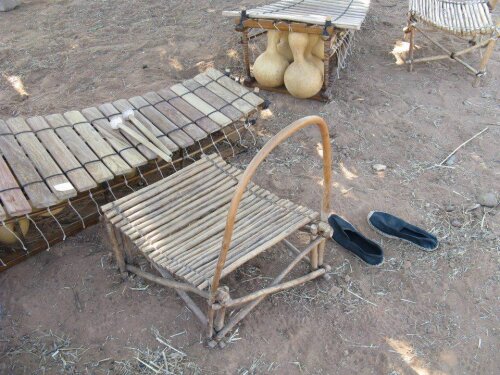
The Wind Egg - Haseeb Ahmed (03/10/2018)
Haseeb Ahmed
- 3 oktober 2018
- Promotoren: Prof Staf Van Tendeloo en Werner Van dermeersch
Abstract
Haseeb Ahmed’s art practice integrates methodologies from the hard sciences in search of a techno-poetics. His exhibition at M HKA, as part of his public defence unfolds his ongoing Wind Egg experiment.
The concept of ‘wind eggs’ postulates that animals and people can be fertilised by the wind – a belief held for millennia by ancient Egyptian, Arab, Indian, European and Chinese cultures. Ahmed has worked to realise this idea with state-of-the-art wind tunnel technology at the von Karman Institute for Fluid Dynamics in Belgium.
In the process of personifying the wind he blends art and aeronautics, myth and technology, reflecting the human capacity to project empathetic sensibilities onto nonhuman things. A project that moves from antiquity to astrobiology, the exhibition will function as a test-site for imagining the possibilities for humans to reproduce without men and with the wind.
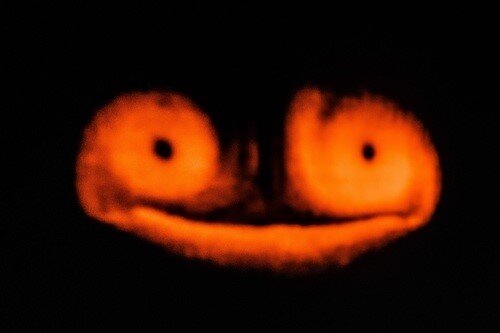
Ahmed received his Masters from the MIT Program in Art, Culture, and Technology and received his Bachelor of Fine Arts at the School of the Art Institute of Chicago. He was previously also a resident at the Jan van Eyck Academie in Maastricht. His work has been exhibited internationally including at the Museum of Contemporary Art Chicago, the Gothenburg International Biennial of Contemporary Art, and the Museum Barengasse Zurich. Haseeb Ahmed is based in Brussels.
Jury:
Individual PhD Commisssion
- Prof. Dr. Florian Dombois (visual artist, professor and head of Research Focus in Transdisciplinarity at Zurich University of the Arts)
- Prof. dr. Staf Van Tendeloo (University of Antwerp, EMAT Research Laboratory)
- Werner Van dermeersch (architect, professor at St Lucas School of Arts Antwerp)
- Prof. dr. Pascal Gielen (University of Antwerp, ARIA, CCQO)
External jury members
Prof. dr. Beatrice de Gelder (director of the Brain and Emotion Laboratory, Maastricht University)
Prof. dr. Olivier Chazot (Head of Aeronautics and Aerospace department at Von Karman Institute for Fluid Dynamics, Brussels)
Chairman jury
Prof. dr. Bart Eeckhout (University of Antwerp, ARIA)
Breuklijnen. Op zoek naar nieuwe artistieke representaties voor het geologisch landschap - Karen Vermeren (12/04/2018)
Karen Vermeren
- 12 april 2018
- Promotoren: Prof. dr. Ivan Nijs en dr. Sofie Verdoodt
Abstract
Dit doctoraatsonderzoek stelt de traditionele opvattingen van landschapsschilderkunst ter discussie. Het zoekt naar nieuwe representaties van het geologisch landschap in tweedimensionale in situ installaties. Het focust in het bijzonder op de beweging van breuklijnen en gletsjers. Door een grid van de tentoonstellingsruimte over het geologisch landschap te schuiven krijgt het verbrokkelende landschap een nieuw kader. Daar de confrontatie met de toeschouwer essentieel is, is de creatie en presentatie van nieuw artistiek werk een belangrijk aspect van dit onderzoeksproject.
Het onderzoek wordt uitgevoerd in samenwerking met de Universiteit van Antwerpen: prof. dr. Ivan Nijs (Onderzoeksgroep Planten- en Vegetatie-ecologie), em. prof. dr. Louis Beyens (Onderzoeksgroep Ecosysteembeheer) en Sint Lucas Antwerpen: dr. Sofie Verdoodt.

Revolutionizing the Jazz Bass: The Life and Music of Jimmie Blanton - Matthias Heyman (23/03/2018)
Matthias Heyman
- 23 maart 2018
- Promotoren: Alexander Dhoest en Eugeen Schreurs
Abstract
This research project offers a comprehensive study of the life, music, and legacy of jazz bass player James 'Jimmie' Blanton, Jr. (1918–1942). Best known for his tenure with Duke Ellington and His Orchestra between 1939 and 1941, Blanton is widely regarded as one of the key figures in the development of jazz bass playing. From 1946 on, an iconic narrative came into being that established him as an artistic hero in the pantheon of jazz (bass) history. In most literature, such icons are treated in generalizing, uncritical manners, resulting in a flawed, limited understanding of Blanton. Previous studies have primarily focused on his recorded solos from 1940, and rarely compare his work to that of his fellow bass players. This research is the first to consider Blanton's complete recorded body of work taken from his entire five-year career, including a large number of broadcasts and live versions. Furthermore, considerable attention is dedicated to his accompaniments, and his work is properly contextualized with a selection of that of his peers.
Through a combination of biography and musical analyses, I reevaluate the importance this bassist holds in the history of jazz, adding nuance to his iconic status. This is achieved through an interdisciplinary methodology, building upon such diverse methods as archival research, reception study, music analysis, visual analysis, and historically informed performance practice. As such, this research, the first one in Belgium to focus on jazz, offers new insights into the historical development of jazz bass playing up to the 1940s, into the social and musical milieus Blanton belonged to, and into the role Ellington played in Blanton's development as a performer. Furthermore, a number of technical matters are addressed, in particular his performance posture and the impact recording technology had on his reception.
Overall, I argue that Blanton did indeed play a transformative role in the development of string bass playing in jazz, yet should also be considered as part of a continuum of bass players that each in their own way contributed to this evolution. While Blanton's approach laid the foundation for how the majority of future bassist soloed and accompanied, he himself relied in part on the groundworks established by other bassists such as Wellman Braud and Walter Page, his own musical influences such as tenor saxophonist Coleman Hawkins and pianist Art Tatum, and Ellington's earlier experiments in writing for the string bass.
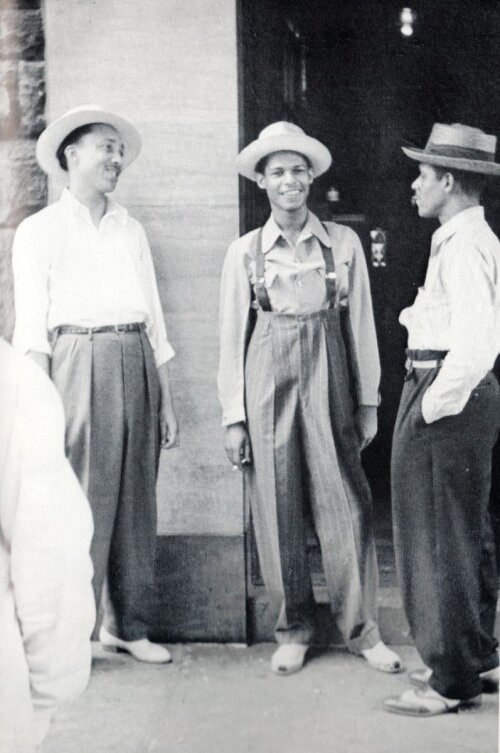
Ik weet niet wat jij gaat zeggen - Erik Hagoort (13/10/2017)
Erik Hagoort
- 13 oktober 2017
- Promotoren: Prof. dr. Arthur Cools en dr. Nico Dockx
Abstract
Samen hardop nadenken. Onbekommerd spreken. Op een niet-polemische wijze met elkaar
in gesprek zijn. Hoe kan je een gedachte gastvrij ontvangen?
Je weet niet wat de ander gaat zeggen.
Je weet niet altijd wat je zelf gaat zeggen.
In zijn proefschrift, getiteld Ik weet niet wat jij gaat zeggen, geeft Erik Hagoort een beeld van wat er hardop werd gedacht tijdens bijeenkomsten die hij initieerde. In essays bouwt hij voort op gedachten over nabijheid van onder anderen Ilse Bulhof, Emmanuel Levinas en Cornelis Verhoeven. De teksten bevatten ontwapenende gedachtegangen die aanzetten tot verder denken over facetten van ontmoeten: onbekommerdheid, gêne, verwondering en verantwoording.
Ik weet niet wat jij gaat zeggen is de uitkomst van Hagoorts doctoraatsonderzoek in de kunst (2014-2017) aan de Universiteit Antwerpen en de Koninklijke Academie voor Schone Kunsten Antwerpen, verenigd in ARIA. Een voorbereidende fase (2009-2011) van het onderzoek vond plaats bij het lectoraat beeldende kunst van de Academie voor Kunst en Vormgeving St. Joost in 's Hertogenbosch, begeleid door Camiel van Winkel.
Naast een praktijk waarin Erik Hagoort condities van ontmoeten in de kunst onderzoekt, doceert hij aan de Koninklijke Academie voor Schone Kunsten in Antwerpen en aan het Masterinstituut van de Academie voor Kunst en Vormgeving St. Joost in 's Hertogenbosch. Eerder verscheen van hem bij het Fonds BKVB, het huidige Mondriaan Fonds, het essay Goede bedoelingen. Over het beoordelen van ontmoetingskunst (2005) en publiceerde hij vele artikelen over hedendaagse kunst in De Volkskrant en Metropolis M. Recent heeft hij bijgedragen aan uitgaves van Valiz en Sternberg Press over sociale kunstpraktijken.
Ik weet niet wat jij gaat zeggen is vanaf 13 oktober verkrijgbaar bij Jap Sam Books: www.japsambooks.nl.
De Engelse editie, I Don't Know What You Are Going To Say, is bij Jap Sam Books verkrijgbaar vanaf begin december 2017. Vertaling: Gregory Ball.
Exhibiting Knowledge - Wesley Meuris (01/09/2017)
Wesley Meuris
- 1 september 2017
- Promotoren: Herwig Leirs en Werner Van dermeersch
Abstract
Dit doctoraatsproject heeft de intentie om de correlatie tussen kennis (weten) en kunst te onderzoeken. In de eerste plaats zal dit onderzoek bevragen wat 'exact weten' en 'artistiek weten' is. Een differentiatie van deze begrippen leidt ongetwijfeld tot een diversiteit aan betekenisvormen en daarbij aansluitende waardeoordelen. Hoe kan een artistiek werk hiermee omspringen? Kan wetenschap een medium worden?
Naast het onderzoek van betekenis, wordt de omgangsvorm en bewaringsvorm van kennis bekeken. Hoe wordt kennis/kunst geconserveerd? Hoe wordt kunst geconsumeerd, hoe gaat het artistieke beeld hiermee om? Hoe beschouwt architectuur (ruimte) zich als dirigent in waardeoordelen van kennis?
Sinds de beeldhouwkunst zich uit de architectuur heeft losgewerkt, is de relatie tussen beide disciplines altijd problematisch gebleven. Architecten benijden de (artistieke) vrijheid van de kunstenaar en kunstenaars zetten zich vaak af tegen de dominerende aanwezigheid van de voor hun kunst geconcipieerde ruimte. Mijn werk wordt dikwijls omschreven als 'deconstruerende installaties met een architectuur-kritische dimensie'. Wat ik in mijn werk deconstrueer is niet zozeer de architectuur, maar onze geconditioneerde blik.
Met de vrijheid en de ongebondenheid van een kunstenaar maak ik geen architectuur om in te wonen, maar architectuur om naar te kijken. Voor Le Corbusier "dient de constructie om het gebouw overeind te houden en de architectuur om te ontroeren" en volgens Ruskin moet "het kijken naar architectuur bijdragen tot de gezondheid, de kracht en het plezier van de geest". Mijn werk bestaat uit installaties, sculpturen en tekeningen, zowel ontwerptekeningen voor te bouwen objecten, als tekeningen van een imaginaire architectuur.
De architecturale vormen zijn tegelijk zeer herkenbaar en toch vervreemdend. Op het eerste gezicht lijken ze een illustratie te zijn van de simulacrumtheorie. Een simulacrum is een kopie van de werkelijkheid die de relatie met de door haar afgebeelde werkelijkheid verloren heeft. Ondanks, of eerder dankzij de perfecte gelijkenis wordt het object een op zichzelf staand fenomeen. Postmoderne theoretici hebben van simulacra gebruik gemaakt om te wijzen op het artificiële karakter van de realiteit. Onder invloed van de media wordt de werkelijkheid gedefinieerd in functie van de manier waarop ze wordt afgebeeld. De werkelijkheid wordt dan gedefinieerd als datgene waarvan een gelijkwaardige afbeelding gemaakt kan worden. Hierdoor wordt het verschil tussen de werkelijkheid en haar afbeelding minder scherp, evenals het verschil tussen realiteit en fictie, tussen het origineel en zijn kopie, tussen wat 'waar' en wat 'vals' is. De kunst verdwijnt in de werkelijkheid zodat ze haast onzichtbaar wordt.
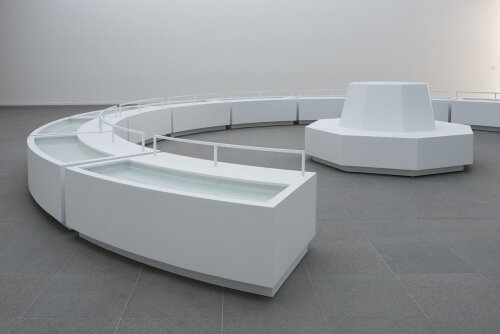
Mastering the curtains - Els Vanden Meersch (26/04/2017)
Els Vanden Meersch
- 26 april 2017
- Promotoren: Phillipe Meers en Johan Pas
Abstract
‘Mastering the curtains’ een artistiek fotografisch onderzoek naar de verhouding van beeldende kunst met erfgoed, propaganda en censuur in Iran. Het onderzoek volgt twee pistes: 1. de Taziyeh, een culturele uiting in Iran die als propaganda-instrument wordt ingelijfd door het regime en 2. de censuur van het baha’isme en de teloorgang van het bijhorend erfgoed. Het fotografisch onderzoek analyseert de mogelijkheden van kritische representatie binnen de beeldende kunsten van beide pistes.
Dit is een onderzoek binnen een breed oeuvre dat architectuur steeds als uitgangspunt neemt. Niet vanuit de architecturale discipline maar vanuit haar filosofische en politieke relevantie ten opzichte van identiteitvorming.
Sinds 2008 verplaatst haar interesse zich geleidelijk richting Midden-Oosten, waar negatiepolitiek ten opzichte van erfgoed, met verwaarlozing als gevolg, overgaat in een politiek van censuur, met destructie als gevolg. Het onderwerp, architectuur, is veelal onderhevig aan actuele ideologische conflicten, al dan niet gewapend. Architectuur die een sterke link heeft met identiteitsvorming van een minderheidsgroep is dikwijls onderhevig aan destructie, soms een doelbewuste tabula rasa met als doelstelling culturele uitvlakking. Hierbij is, in vergelijking met de projecten die ze initieerde in West-Europa, de scheidingslijn tussen heden en verleden niet volledig te maken. Het onderwerp is minder te plaatsen in een voltooid verleden tijd.
Sound Presence - Jan Schacher (18/04/2017)
Jan Schacher
- 18 april 2017
- Promotoren: Prof. dr. Erik Myin en Prof. dr. Kathleen Coessens
Cilindrische anamorfose. Thaumaturgische Oorsprong en Hedendaagse Werking - Rudi Knoops (16/02/2017)
Rudi Knoops
Dubbeldoctoraat met KULeuven
- Promotor KUL: Willem Hesling
- Promotor UAntwerpen: Kurt Vanhoutte
- Promotor LUCA: Bart Geerts
Verdedigde doctoraten 2016
Karin Hanssen - De geleende blik
Een schilderkundig onderzoek naar het gebruik van tijd (flashback) door de werking ervan vanuit de praktijk te onderzoeken, te definiëren en af te bakenen naar vorm, inhoud en inzet vertrekkende van de relatie fotografie/schilderkunst.
- Jaar: 2016
- Promotor UAntwerpen: Kurt Vanhoutte
- Promotor KASKA: Johan Pas
Over dit doctoraat
Het essay ‘DE GELEENDE BLIK – in dialoog met de tijd’ is een verslag van de zoektocht naar de Terugblik binnen de Geleende Blik. Heel wat hedendaagse schilders gebruiken fotografische beelden als bronnenmateriaal voor het maken van schilderijen. Wanneer ze beelden gebruiken van iemand anders, lenen ze de blik van de andere auteur. De titel De Geleende Blik verwijst naar die actie en verplaatsing. De verplaatsing van het fotografische beeld naar het schilderij in tijd (Terugblik) en ruimte verandert de lezing van het beeld.
‘DE GELEENDE BLIK – in dialoog met de tijd’ bestaat uit 2 delen waarin de dialoog centraal staat.Deel 1 omvat 7 hoofdstukken en is geconstrueerd rond het schilderij De Pantoffeltjes (1662) van Samuel Van Hoogstraten. We reizen doorheen drie tijdvakken: de 17e eeuw, de jaren 50-70 van de vorige eeuw en het heden met een blik op de manier waarop elke tijdruimte met beelden en moraal omgaat. We kijken naar het verband tussen de camera obscura en filosofie, de vrouw als moreel kompas (het geframede vrouwbeeld) en haar plaats in het interieur weergegeven in genreschilderijen. ‘DE GELEENDE BLIK – in dialoog met de tijd’ is een feministisch essay met de Rückenfigur als gids én motief die de inhoud van het onderzoek bundelt. Terwijl we ons buigen over appropriatie van beelden doorheen de tijd en de gevolgen ervan, baant de Rückenfigur zich in het essay een weg van figurant op de achtergrond naar hoofdpersoon op de voorgrond. Beweging en tegenbeweging of omkering is waar het essay om draait. Projectie en reflectie vormen de strategie. In de eerste hoofdstukken, Penetratie, is die beweging mannelijk voyeuristisch, van voorgrond naar achtergrond, met de blik op de passieve Rückenfigur in de verte. In het laatste deel Emancipatie, is die beweging vrouwelijk, van achtergrond naar voorgrond, van klein naar groot. Penetratie wordt emancipatie, de passieve vrouw als bearer of meaning, wordt actief en maker of meaning. Ze breekt los uit de haar beklemmende en beperkende kaders, werpt de mannelijke blik af en creëert ruimte voor zichzelf met A Room of Her Own als laatste beeld.
Deel 2 van de thesis bevat dialogen: gesprekken met Charlotte Mullins rond de verschillende versies van Onkel Rudi en een gesprek met Luc Tuymans. Het laatste gesprek is vastgelegd in de film ‘In dialoog met Luc Tuymans’ (2013).Tijdens mijn zoektocht ontstonden twee feministische schilderijenreeksen THE BORROWED GAZE/Variations GTB (2010-2011) en A Room of One’s Own (2011-2014). Ze worden in de laatste hoofdstukken besproken.
Charlotte Lybeer - Lifestyle supermarket
Aan de hand van het medium fotografie worden toepassingen van wat de filosoof Lieven De Cauter ‘de capsulaire beschaving’ noemt onderzocht.
- Jaar: 2016
- Promotor UAntwerpen: Phillipe Meers
- Promotor KASKA: Johan Pas
Steve Van den Bosch - Het kunstwerk als productief verdwijnpunt
- Jaar: 2016
- Promotor UAntwerpen: Arthur Cools
- Promotor SLA: Mark Luyten
Frederik De Bleser - De impact van generatieve software op grafisch ontwerp
- Jaar: 2016
- Promotor UAntwerpen: Serge Demeyer
- Promotor Sint Lucas Antwerpen: Lucas Nijs
Over dit doctoraat
Dit doctoraat onderzoekt de impact van generatieve software op grafisch ontwerp en kunst, en hoe een dergelijke aanpak verschilt van klassieke digitale gereedschappen zoals Adobe Photoshop. We stellen de vraag of ontwerpers efficiënter zijn, een bredere aanpak kunnen hanteren, een nieuwe esthetiek ontdekken en of ze binnen zo'n omgeving zelfredzaam zijn. Het bestudeert de aanpak van de auteur door projecten met zelfgemaakte generatieve software. Het bestudeert de aanpak van anderen door masterclasses en workshops met studenten en bevragingen van professionals. Uit het onderzoek kunnen we de reikwijdte van software voor generatieve vormgeving begrijpen en mee de toekomst bepalen voor de digitale gereedschappen die vormgevers dagelijks gebruiken.
Ludwig Albert - Movin’ grips: body controlled marimba sound production
Empirische en theoretische validering van een model van educational engineering in het marimbaonderwijs
- Jaar: 2016
- Promotor UAntwerpen: Jozef Colpaert
- Promotor KCA: Alain Craens
Verdedigde doctoraten 2015
Lieven Segers - The joke is on me
in search of appearances of humour in contemporary art
- Jaar: 2015
- Promotor UAntwerpen: Frederik Swennen
- Promotor KASKA: Johan Pas
Alexandra Verschueren - Building Garments
Researching fashion design through architecture
- Jaar: 2015
- Promotor UAntwerpen: Kurt Vanhoutte
- Promotor KASKA: Dirk Van Saene
Verdedigde doctoraten 2014
Nico Dockx - The New Conversations
Onderzoek met betrekking tot de notie ‘conversatie’ als een mogelijk en tegelijkertijd onmisbaar plastisch onderdeel binnen de context van een hedendaagse, artistieke praktijk
- Jaar: 2014
- Promotor UAntwerpen: Geert Lernout
- Promotor KASKA: Johan Pas
Annelies Focquaert - Jacques-Nicolas Lemmens
Leven en werk van een Belgisch organist, gezien vanuit de 19e-eeuwse orgelpraktijk
- Jaar: 2014
- Promotor UAntwerpen: Henk De Smaele
- Promotor KCA: Eugeen Schreurs
Over dit doctoraat:
De Belgische organist Jacques-Nicolas Lemmens (1823-1881) werd geboren in een stil dorp in de Antwerpse Kempen. Zijn naam en faam als organist, pedagoog en kerkmusicus verspreidden zich over heel Europa en vanaf circa 1860 stond hij te boek als één van de meest belangrijke, zo niet de belangrijkste organist van de 19de eeuw.
Het gevoerde doctoraatsonderzoek had tot doel om vanuit de historische bronnen en vanuit de praktijkervaring met de orgelwerken van Lemmens het grote verhaal te vertellen van zijn leven en werk, om zo te komen tot een globaal en evenwichtig beeld van Lemmens als organist. Het proefschrift bestaat dan ook uit twee delen: een biografisch luik en een artistiek-praktijkgericht tweede luik.
Het globale beeld dat van Lemmens uiteindelijk naar voren komt, is dat van een organist tussen twee werelden in, een 'fusionalist', een 'klassieke progressist'. Hij blijft een controversieel en tegelijkertijd inspirerend figuur; hij was, is en blijft een uitdager.
Verdedigde doctoraten 2012
Tom De Smedt - Modeling Creativity
Case Studies in Python
- Jaar: 2012
- Promotor UAntwerpen: Walter Daelemans
- Promotor Sint Lucas Antwerpen: Lucas Nijs
Hans Theys - Het kijkbeeld
Een pleidooi voor een meervoudige benadering van de wereld, vertrekkend van bijzondere zoekbeelden bij enkelingen, ontdekt en beschreven op basis van deelnemend kijken.
- Jaar: 2012
- Promotor UAntwerpen: Herman Van Goethem
- Promotor KASKA: Johan Pas
Stefan Van Puymbroeck - Maddalena
Muziekwetenschappelijke en artistieke studie naar historische en stilistische achtergronden in de Russische opera's van Sergei Prokoview en het belang van Maddalena als voorstudie voor de Speler en de Vuurengel
- Jaar: 2012
- Promotor UAntwerpen: Bruno Blondé
- Promotor KCA: Stephan Weytjens
Over dit doctoraat:
Centraal in dit project stond de herorkestratie van Prokofiev’s eerste opera “Maddalena” (1911-1913), waarvan hij de orkestratie nooit zelf voltooide. Aan deze opera werd een nieuw, eigen operaproject gekoppeld: “Outcry of a dusky mind” (libretto: Wim Geysen): een verhaal dat verder gaat, daar waar Maddalena ophoudt. Hoofdpersonage Maddalena komt niet in het reine met wat ze heeft gedaan en belandt in de psychiatrie waar ze uiteindelijk ten onder zal gaan. Het muziektheoretisch luik van het doctoraat bracht het oorspronkelijke toneelstuk van de hand van Baronessa M. Liven, de dochter van een voormalige directeur van de Hermitage in Sint-Petersburg, na meer dan negentig jaar weer aan de oppervlakte.
Verdedigde doctoraten 2010
Spank Moons - The Skull Within - 'In Questa Tomba Oscura'
Pixelation as strategy of (dis)appearance.
- Jaar: 2010
- Promotor UAntwerpen: Luk Van Den Dries
- Promotor KASKA: Johan Swinnen
Bruno Van Dijck - Topografische resonanties
Onderzoek naar diverse landschapsinterpretaties van 300 kleine olieverfschilderijen met een identiek formaat en hetzelfde onderwerp: de Britse kust.
- Jaar: 2010
- Promotor UAntwerpen: Arthur Cools
- Promotor KASKA: Johan Pas
Verdedigde doctoraten 2009
Yves Senden - Muzikale interpretatie vanuit het pragmaticisme van Peirce
- Jaar: 2009
- Promotor UAntwerpen: Peter De Graeve
- Promotor KCA: Eugeen Schreurs
Over dit doctoraat:
Om muzikale betekenisvorming te duiden wordt in eerste instantie, op basis van de pragmaticistische inzichten van C.S. Peirce, nagegaan hoe het semiotisch proces an Sich functioneert. Vervolgens wordt het specifiek muzikaal proces van betekenisvorming op basis van deze inzichten geduid aan de hand van de vier noodzakelijke actoren: het klinkend muzikale teken, het genoteerde muzikale teken, het waargenomen muzikale teken, en de rol van de uitvoerder.
Ewald Demeyere - A Contextual, Text-Critical Analysis of Johann Sebastian Bach’s Art of Fugue
Reflections on Performance Practice and Text-Critical Analysis, and the interaction between them
- Jaar: 2009
- Promotor UAntwerpen: Bruno Blondé
- Promotor KCA: Eugeen Schreurs
Verdedigde doctoraten 2008
Dirk Van der Eecken - De kunst van het onzichtbare
Tekeningen en betekenis van nanostructuren
- Jaar: 2008
- Promotor UAntwerpen: prof. dr. Staf Van Tendeloo
- Promotor SLA: Werner Van dermeersch
Pat Harris - Reduction within Figurative Painting
Research concerning the making of figurative paintings and the systematic reduction and elimination of narrative details within the figurative image
- Jaar verdediging: 2008
- Promotor UAntwerpen: Geert Lernout
- Promotor KASKA: Toon Brouwers